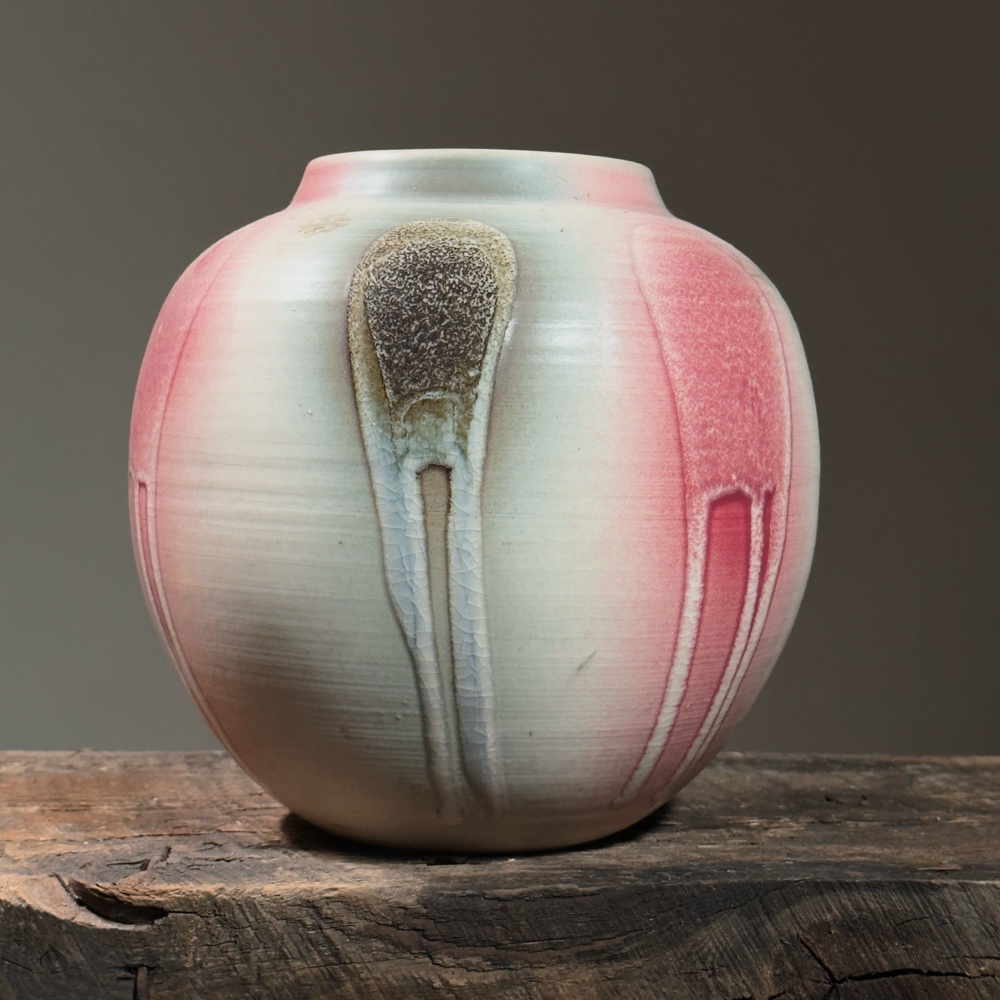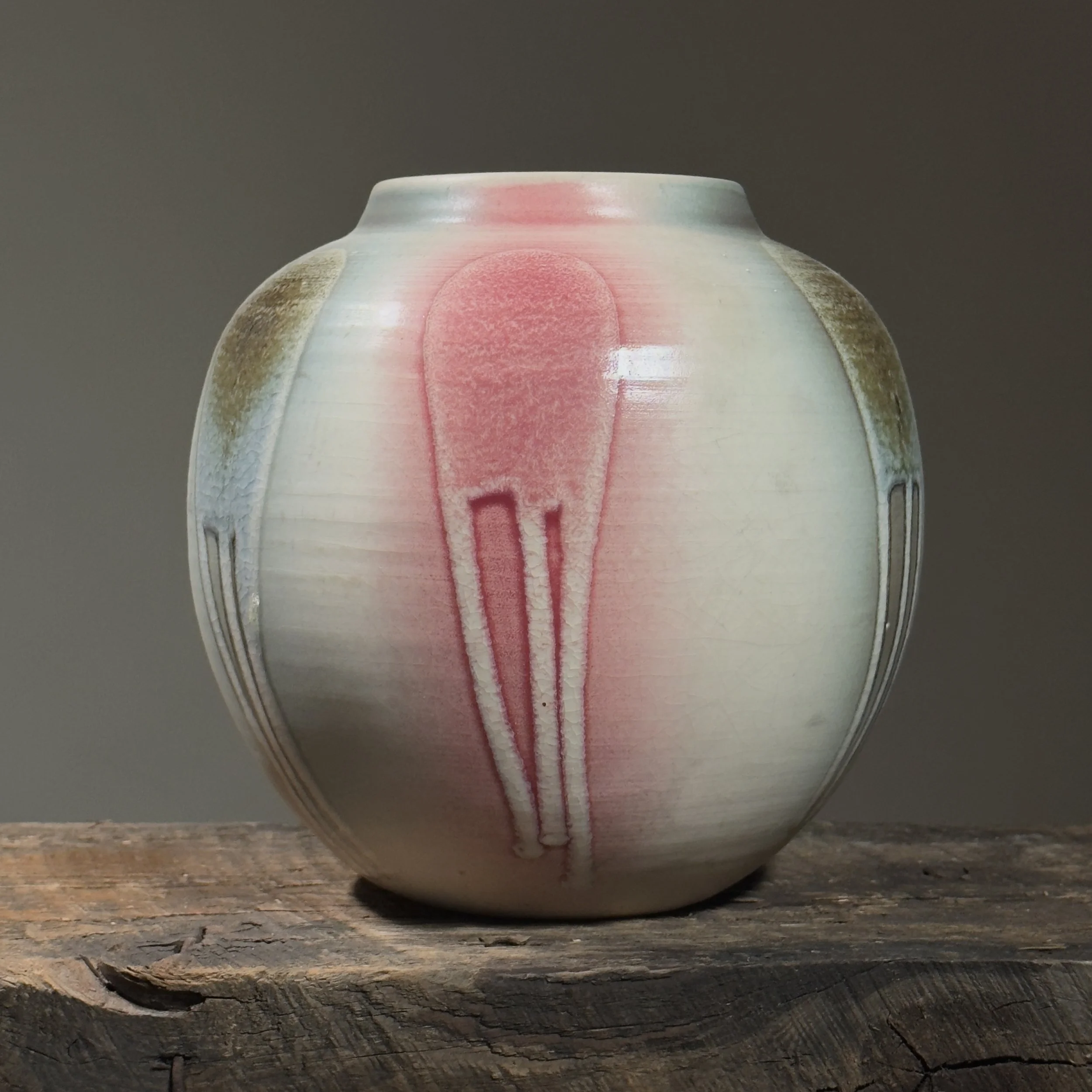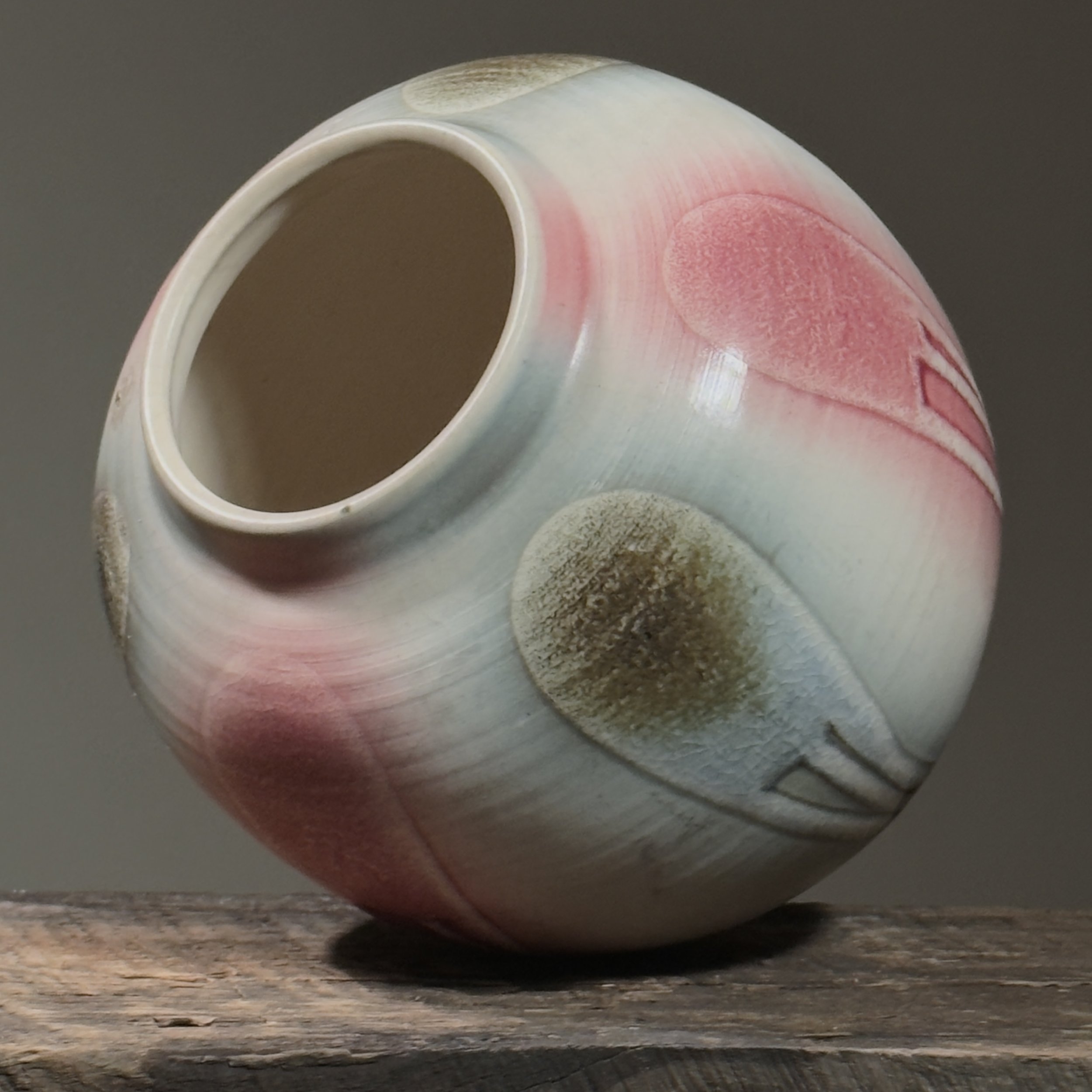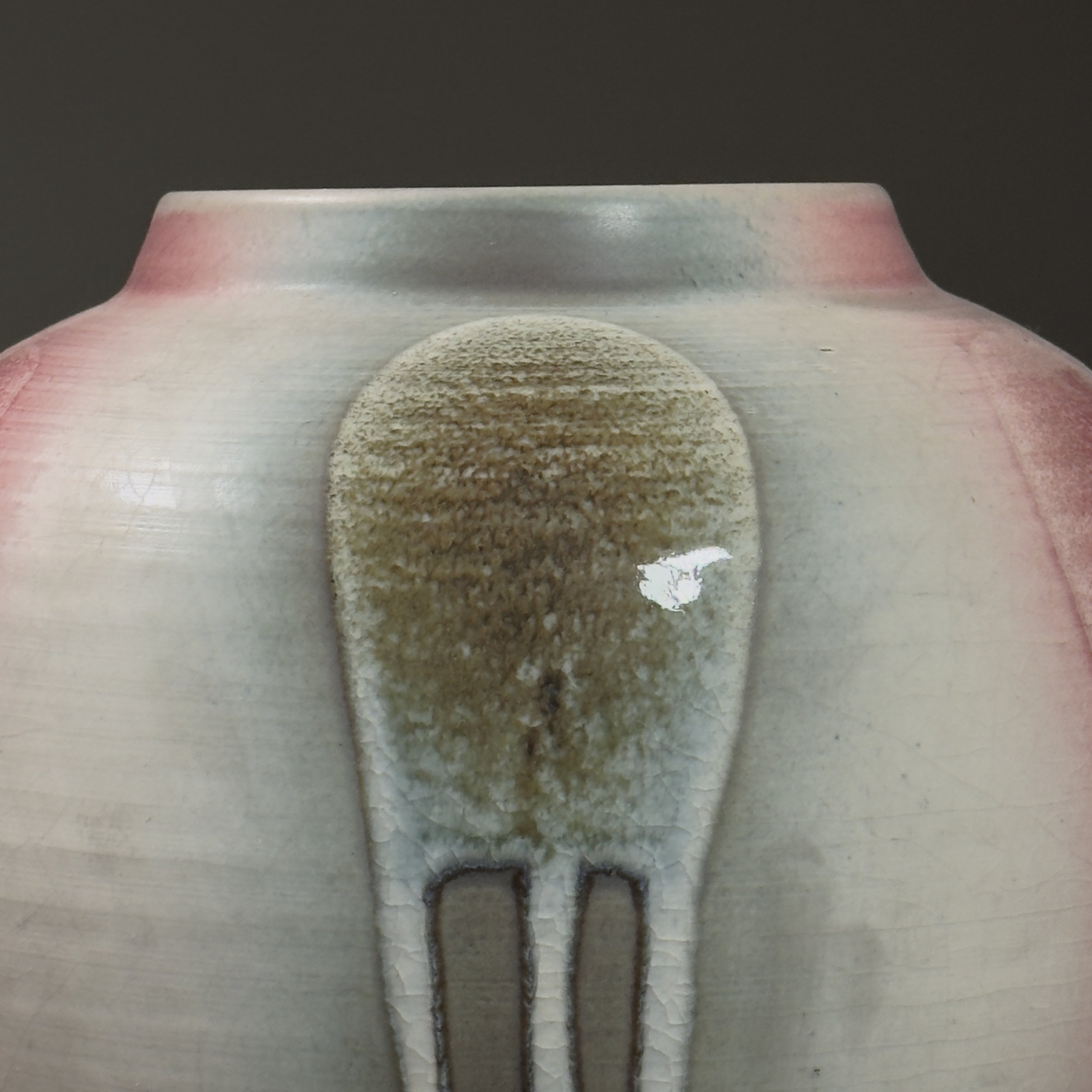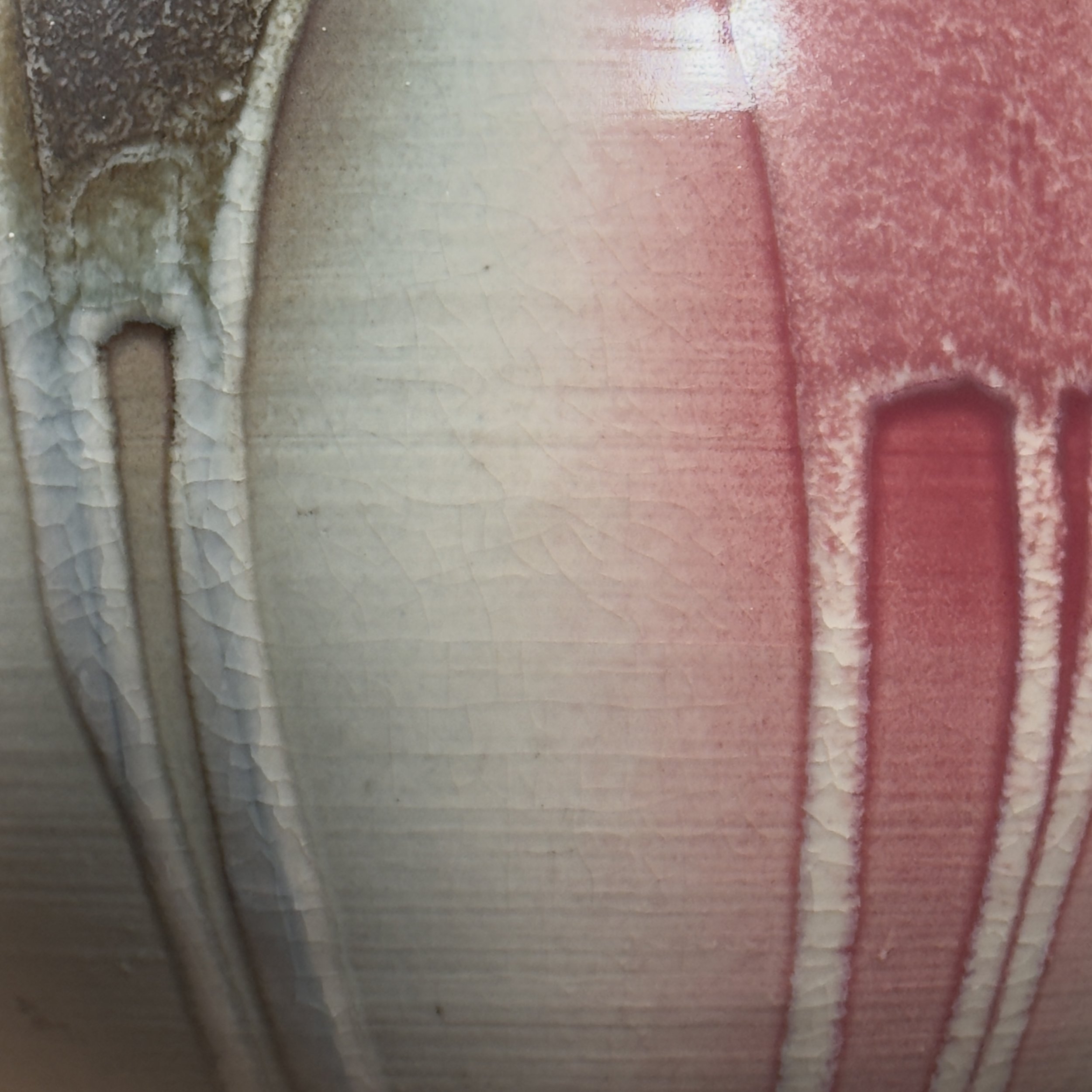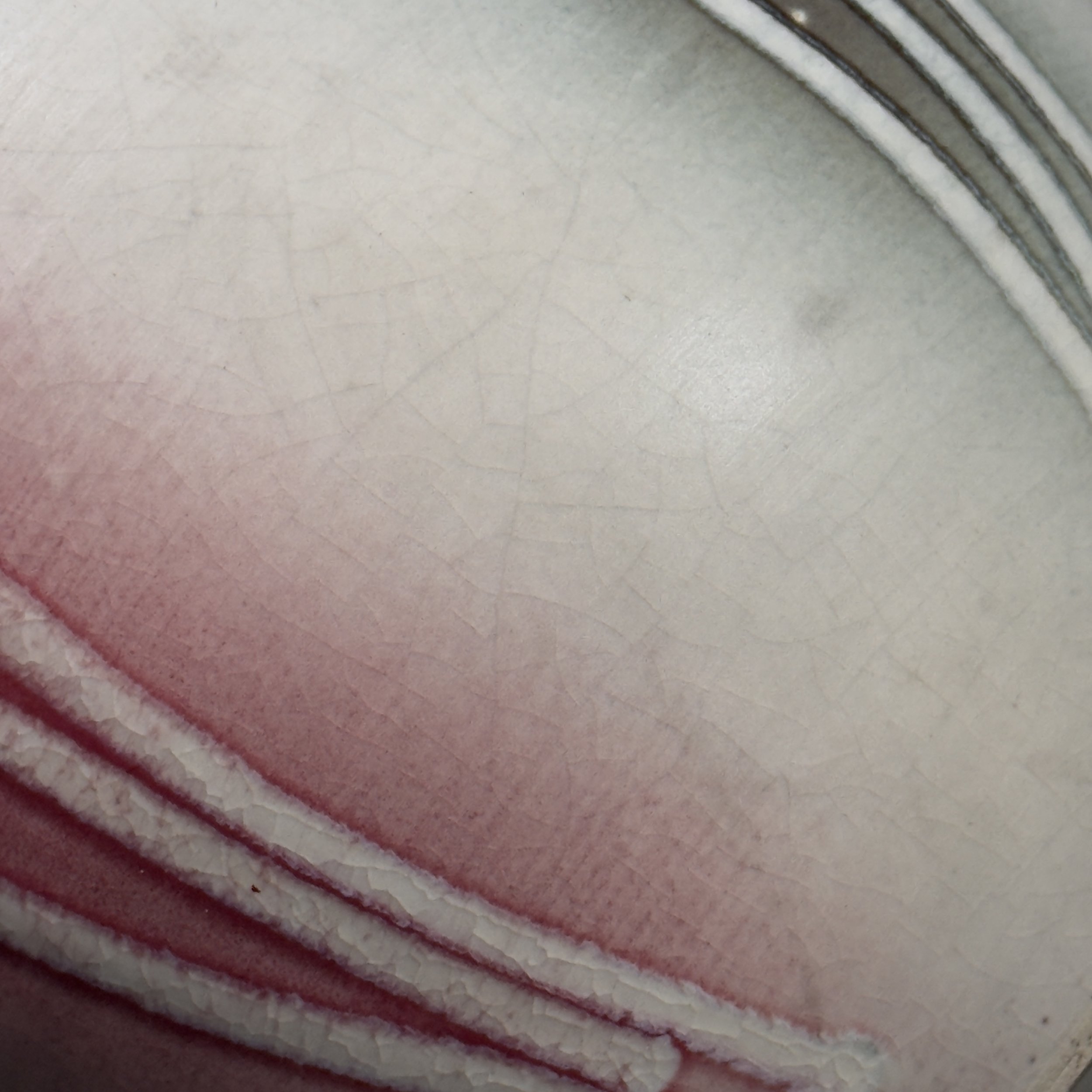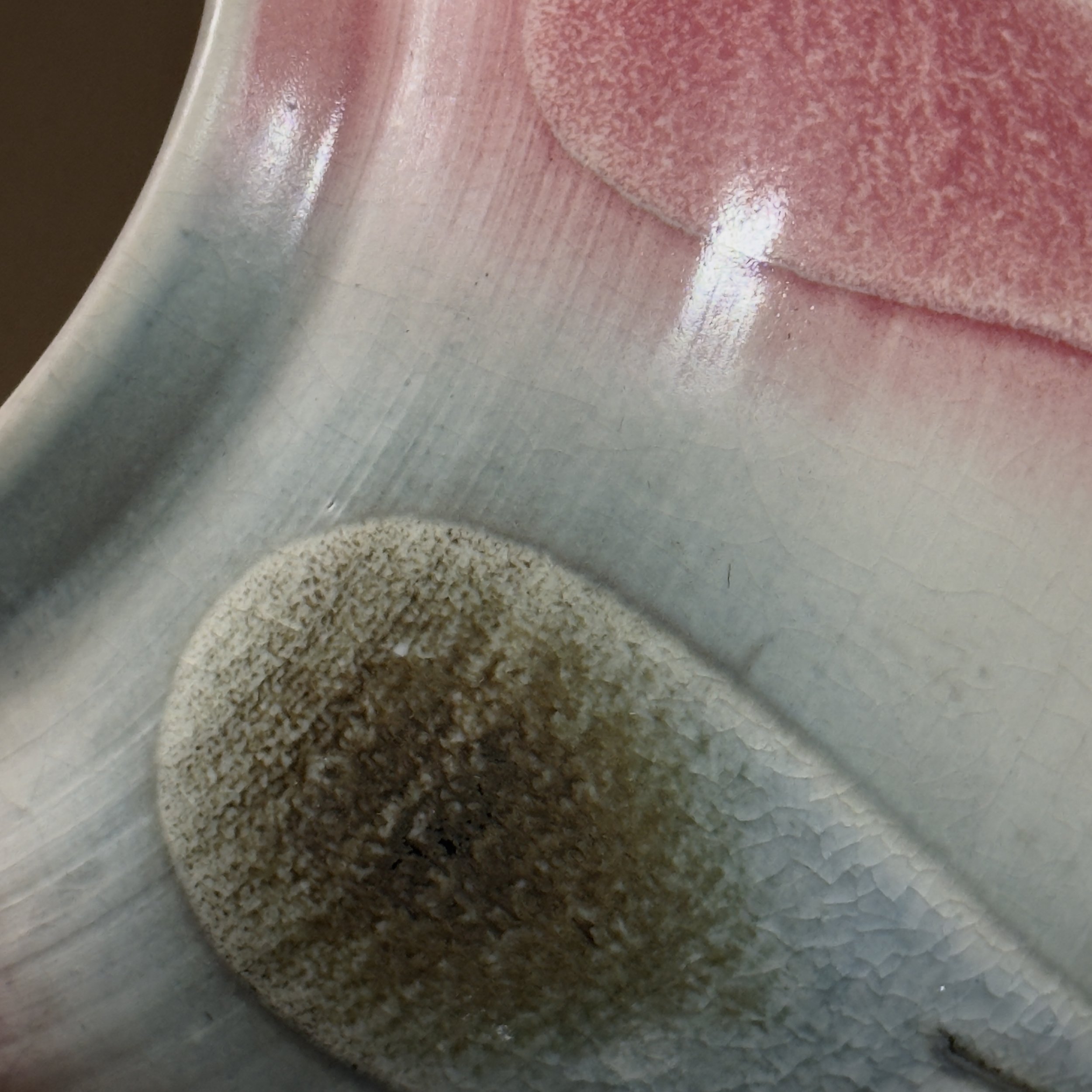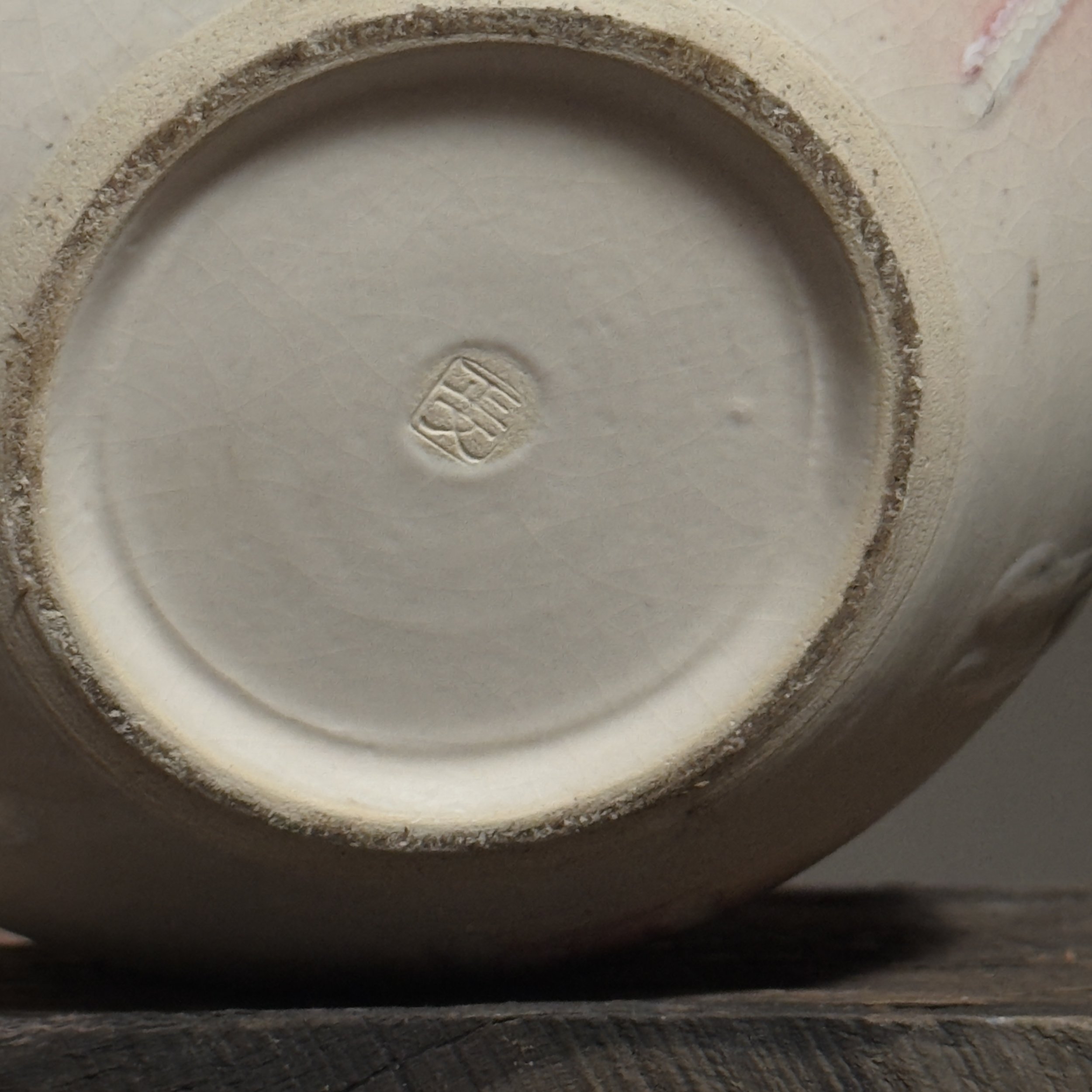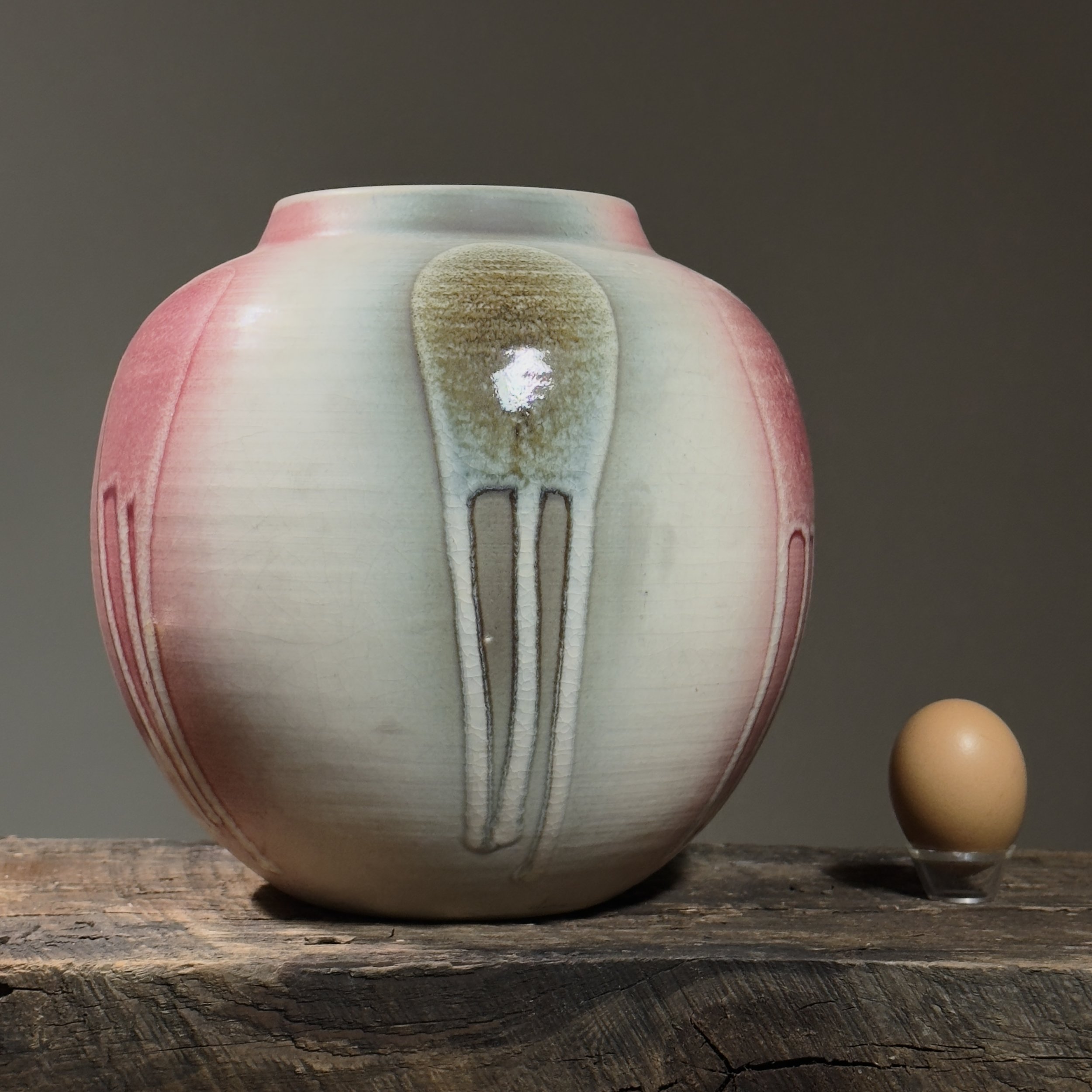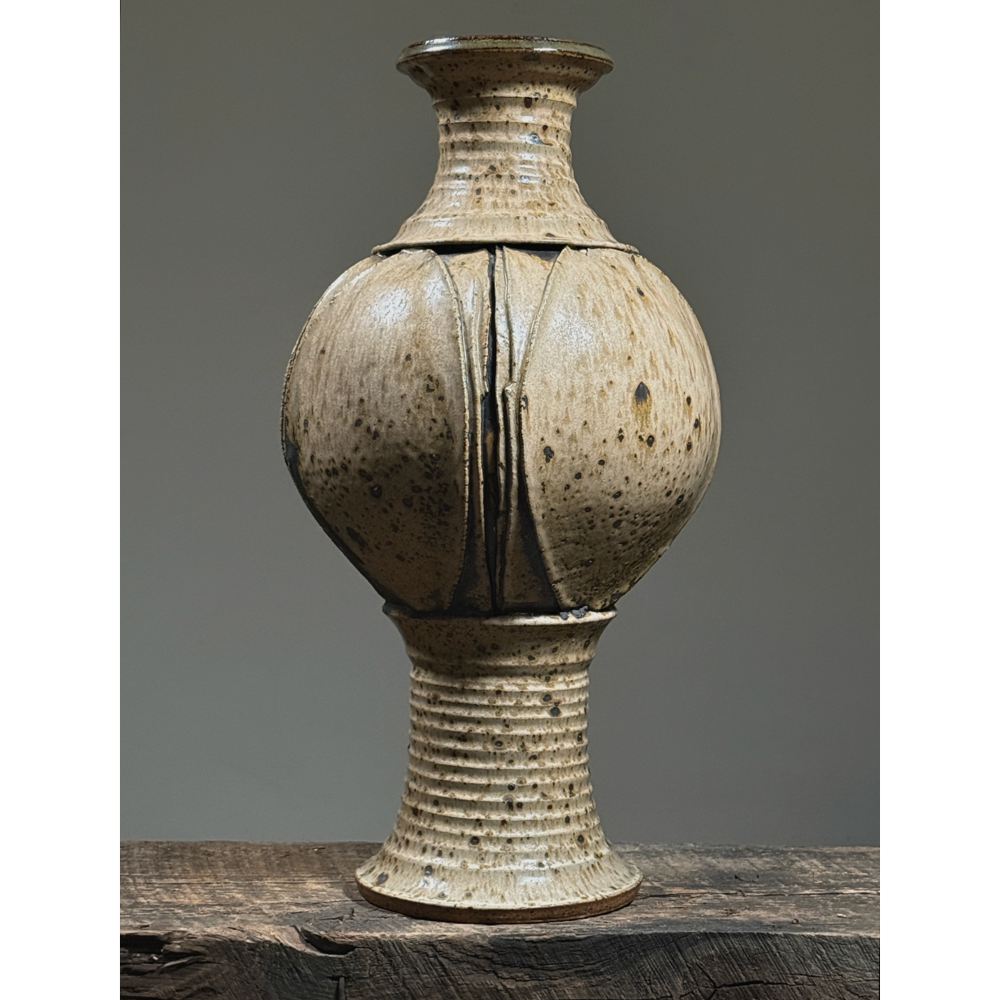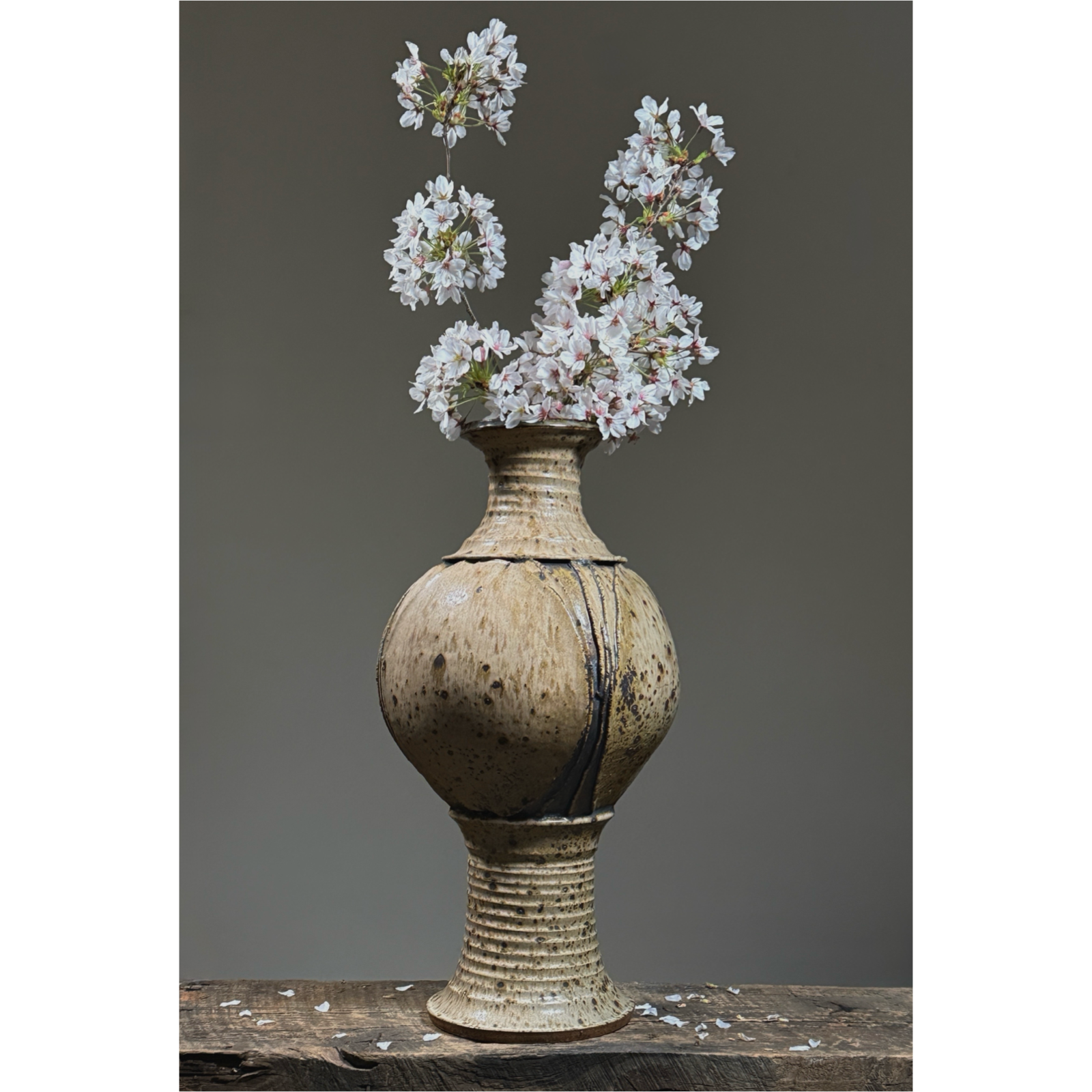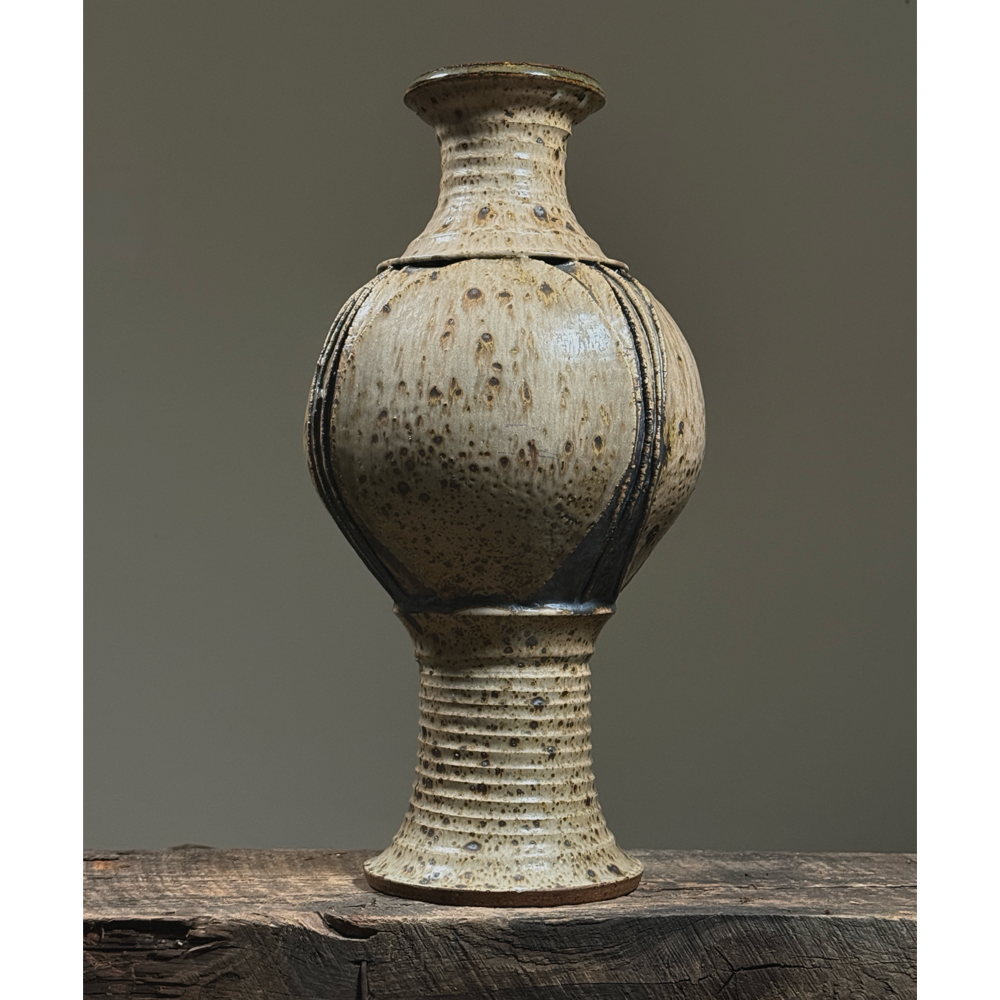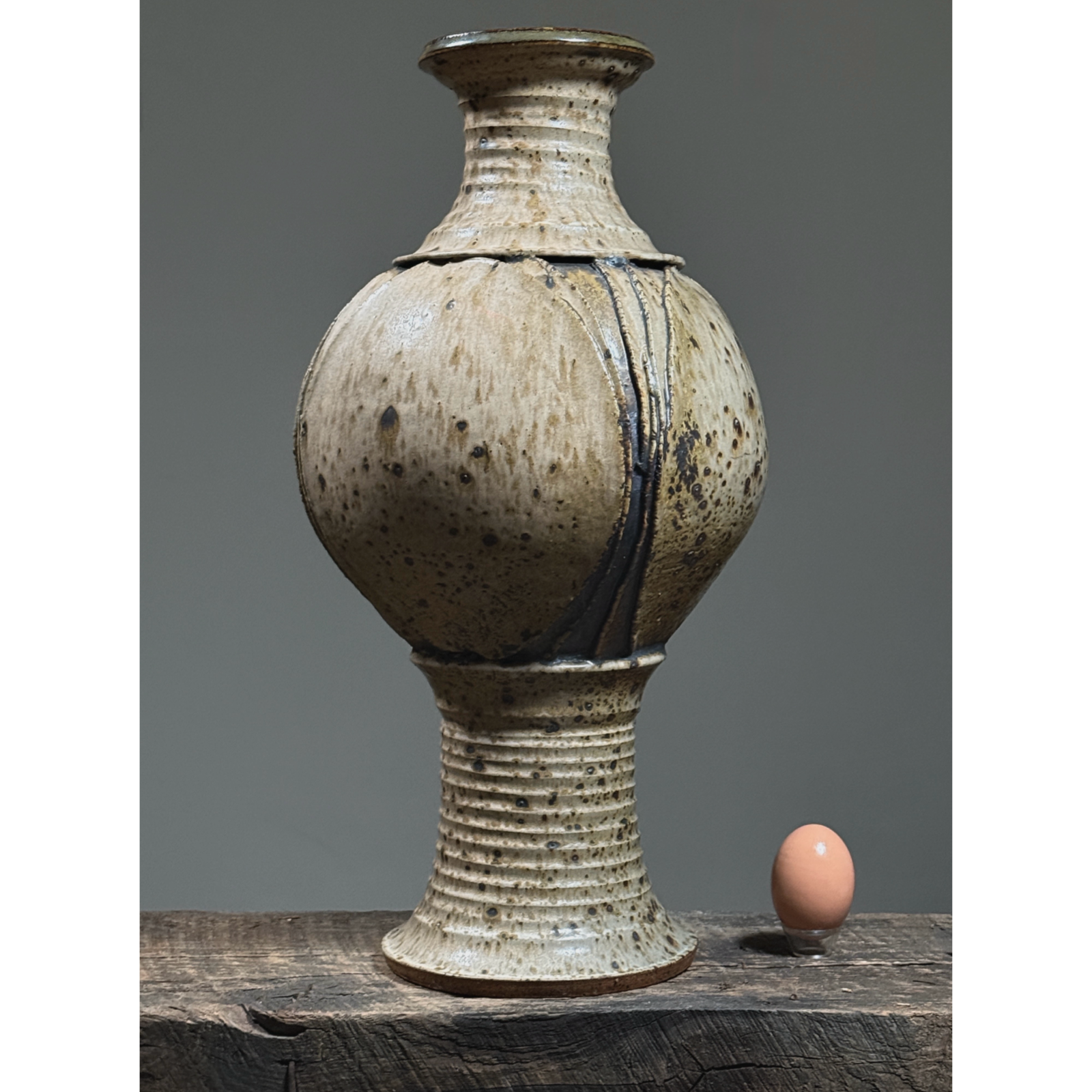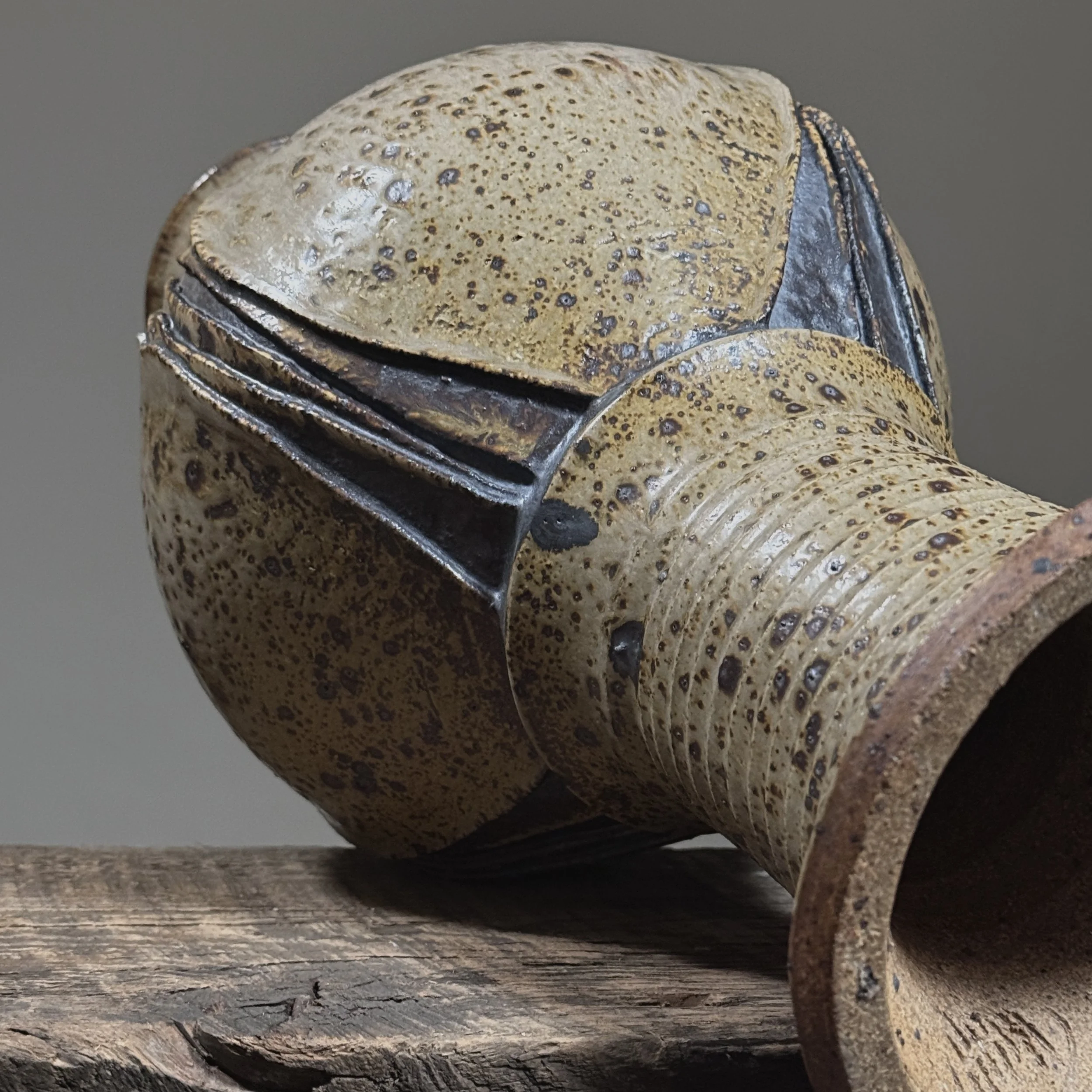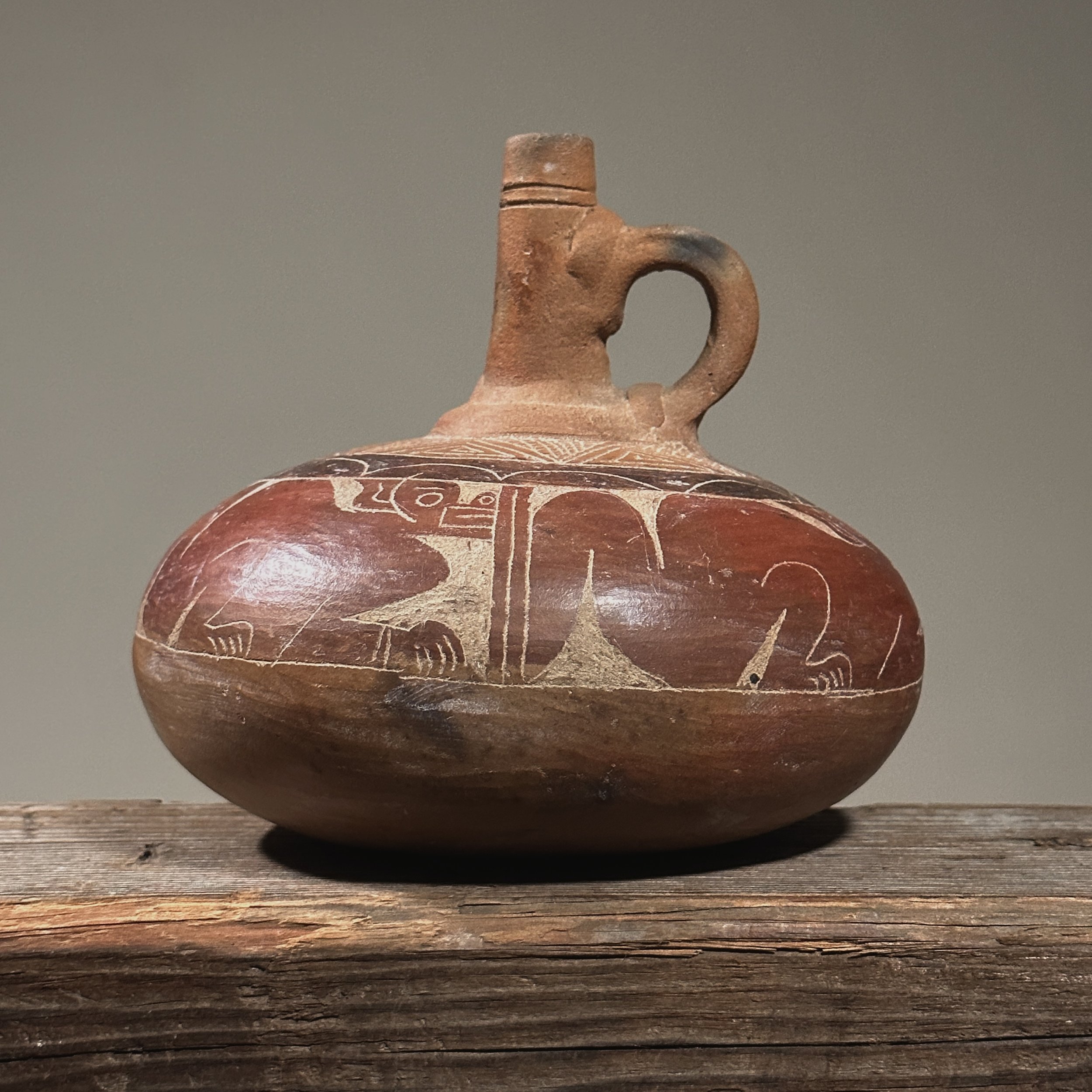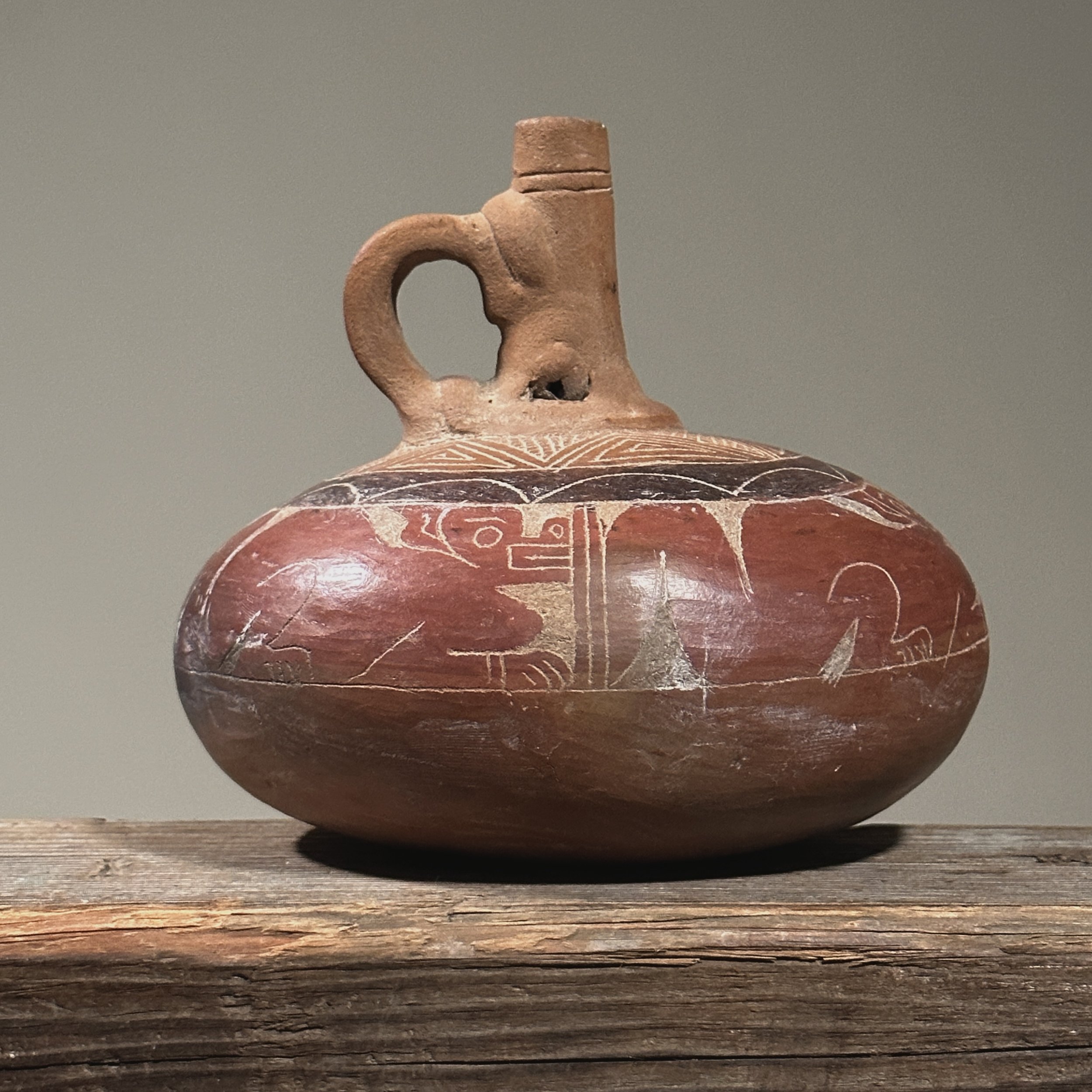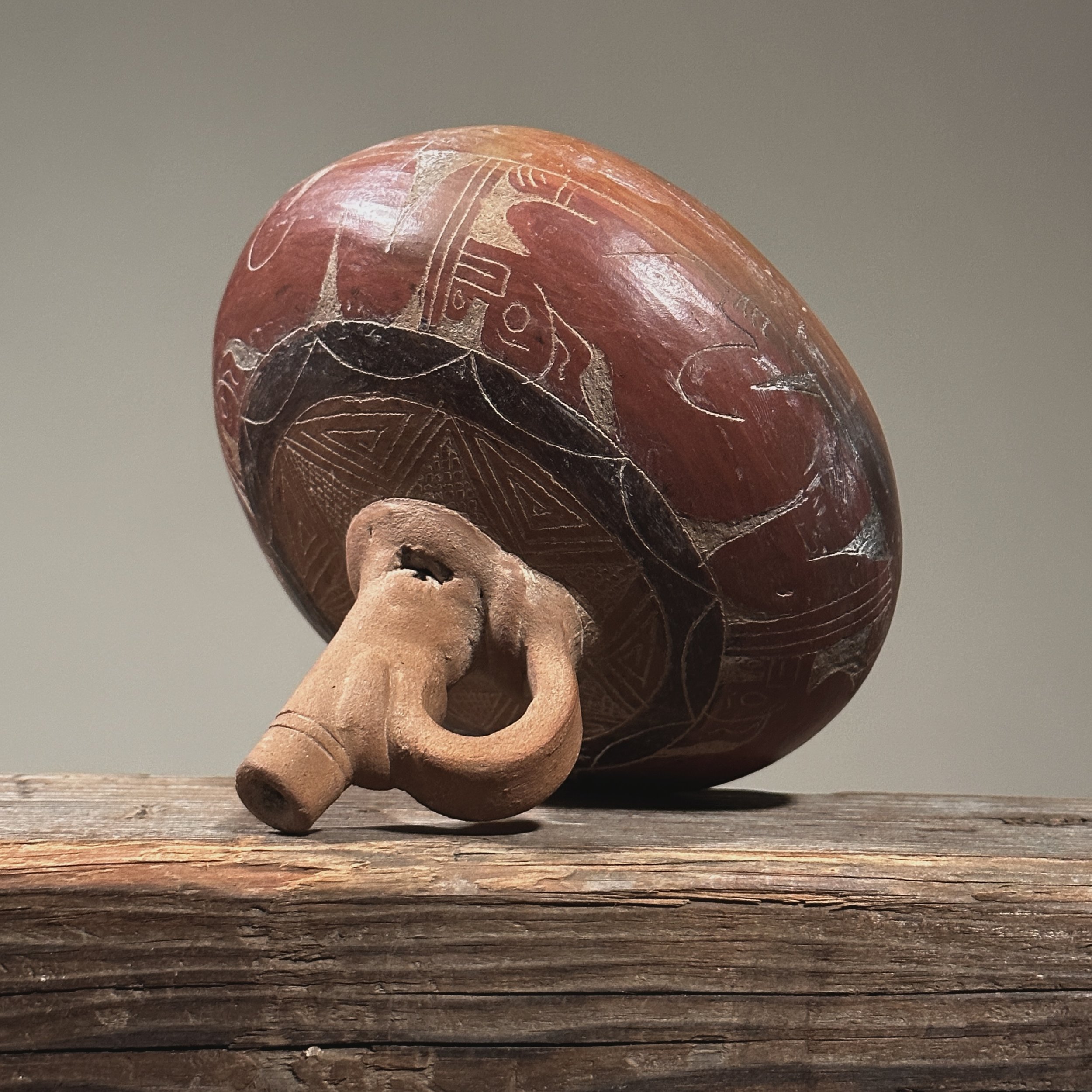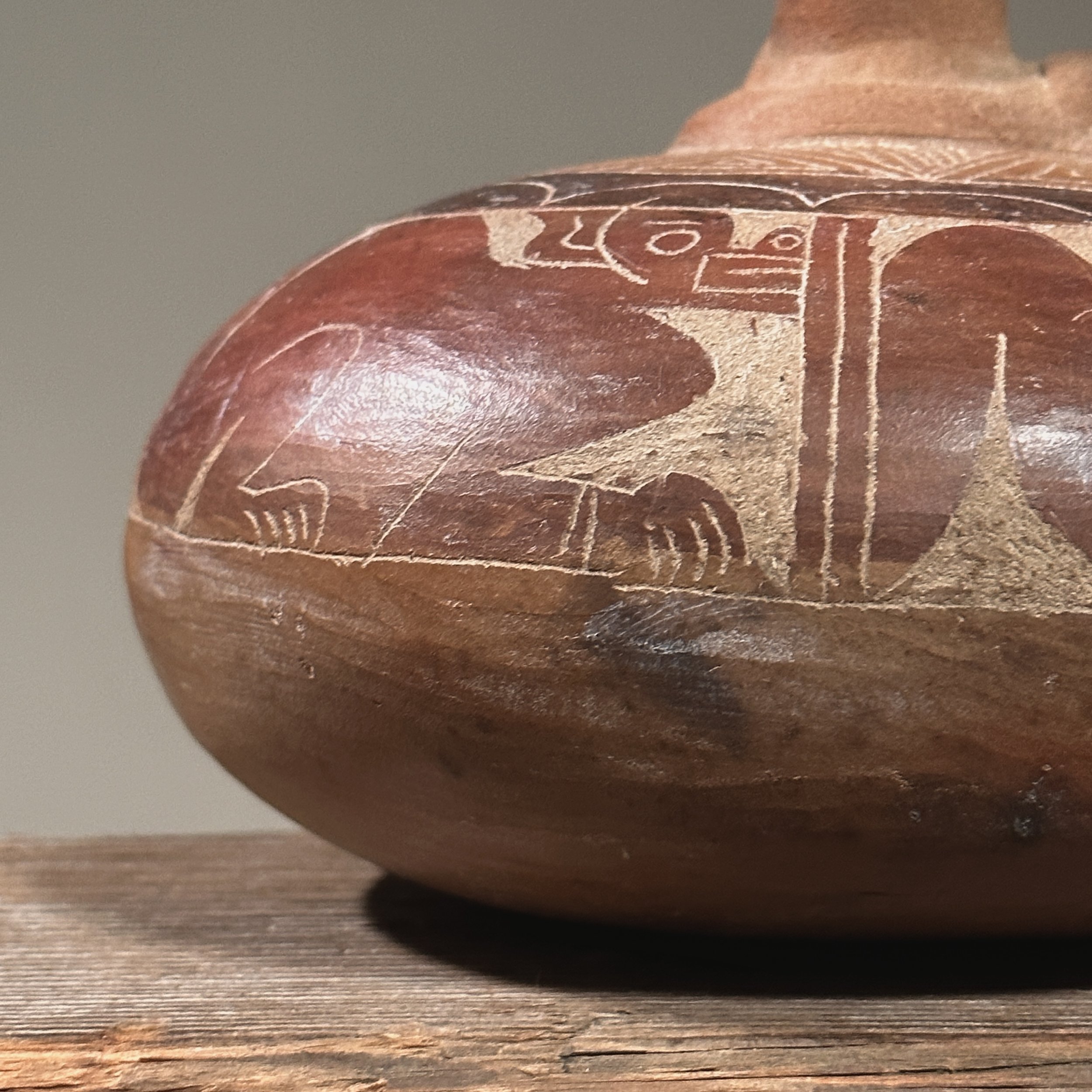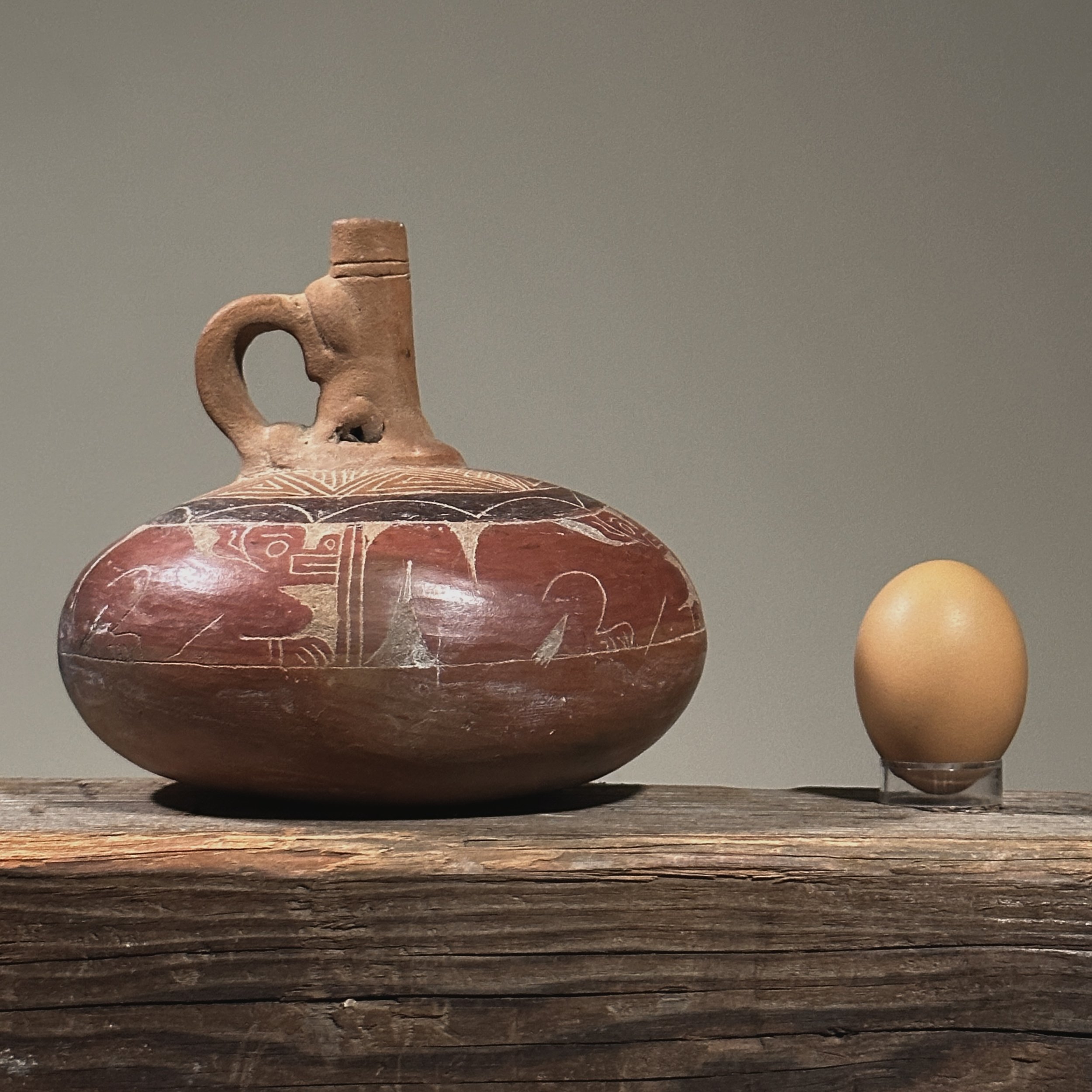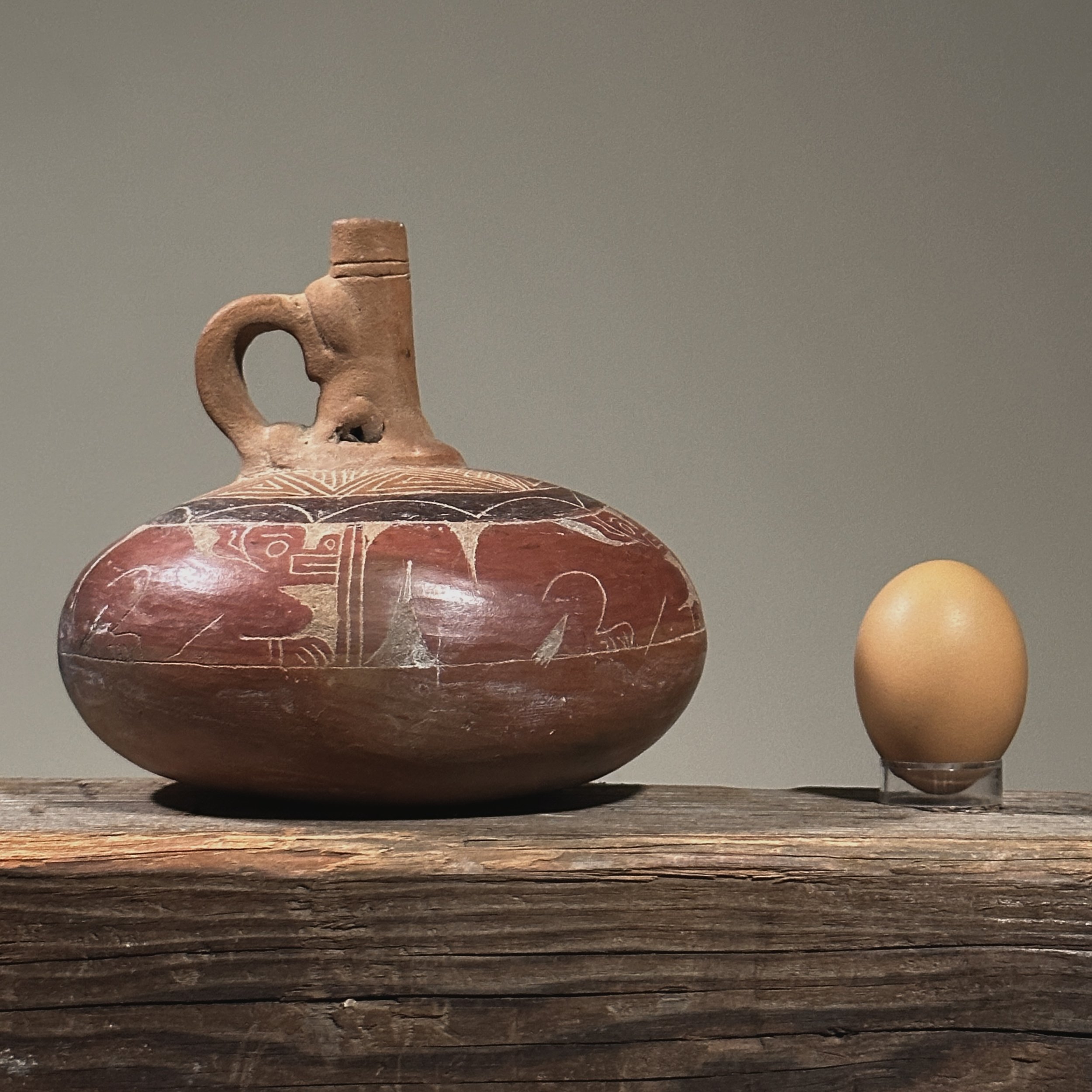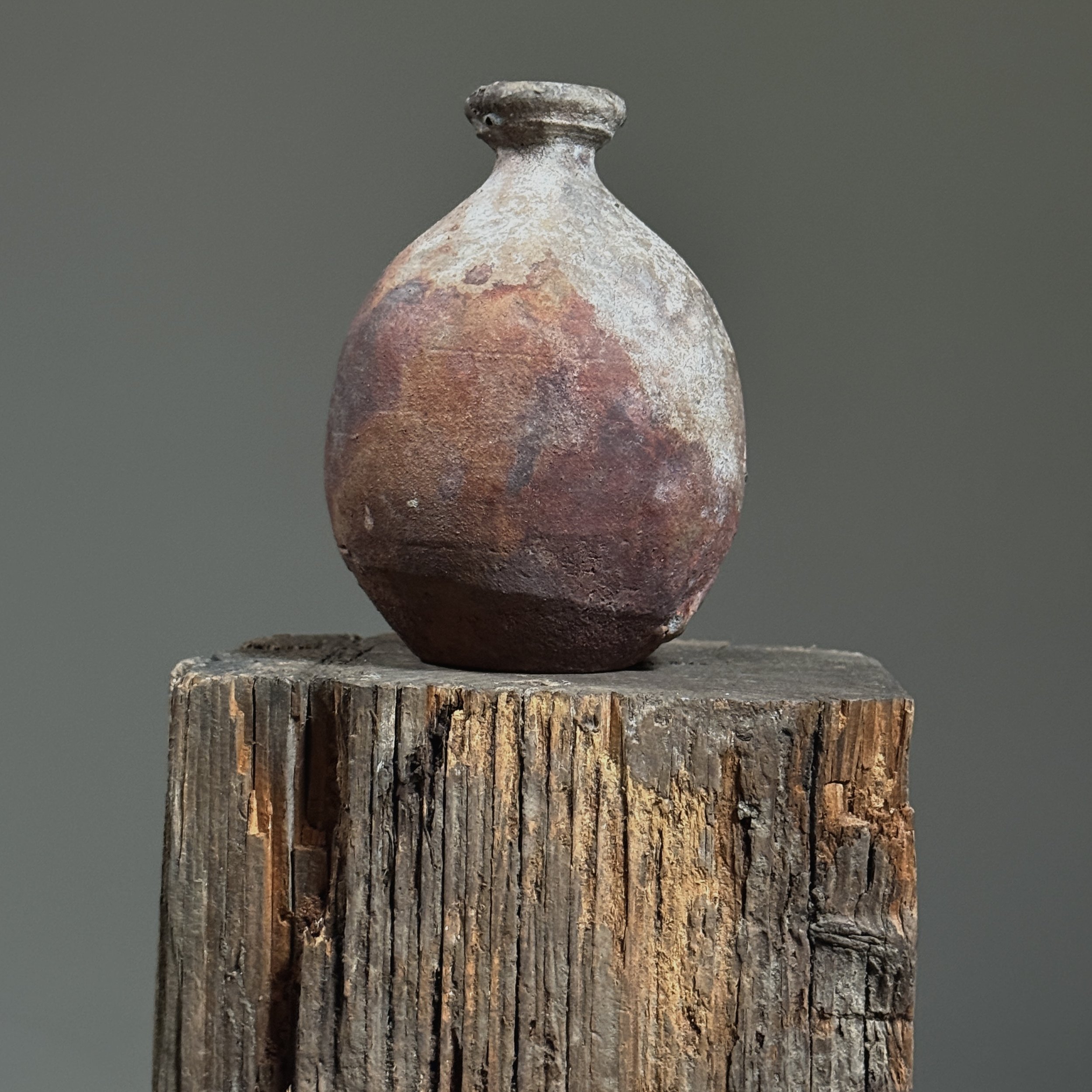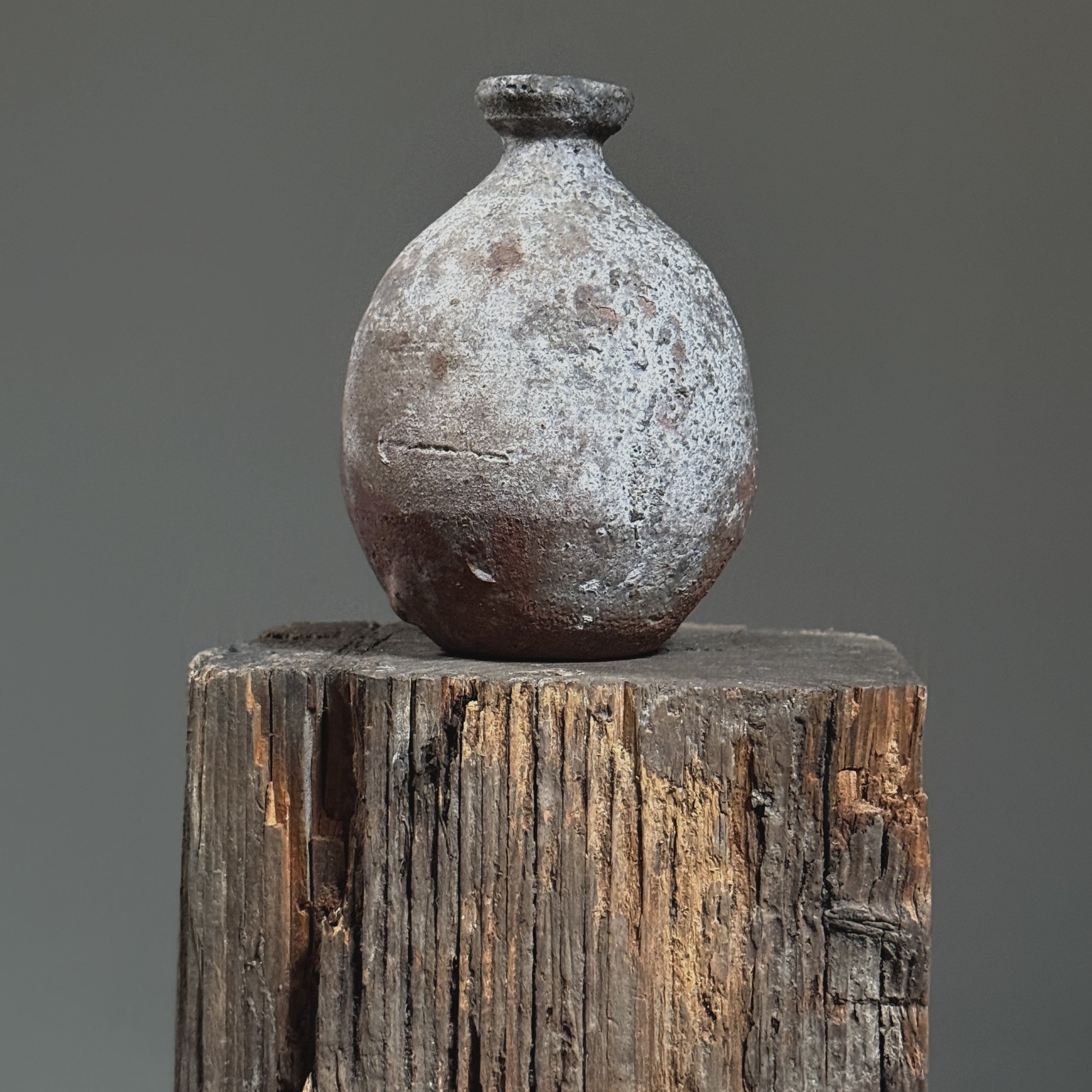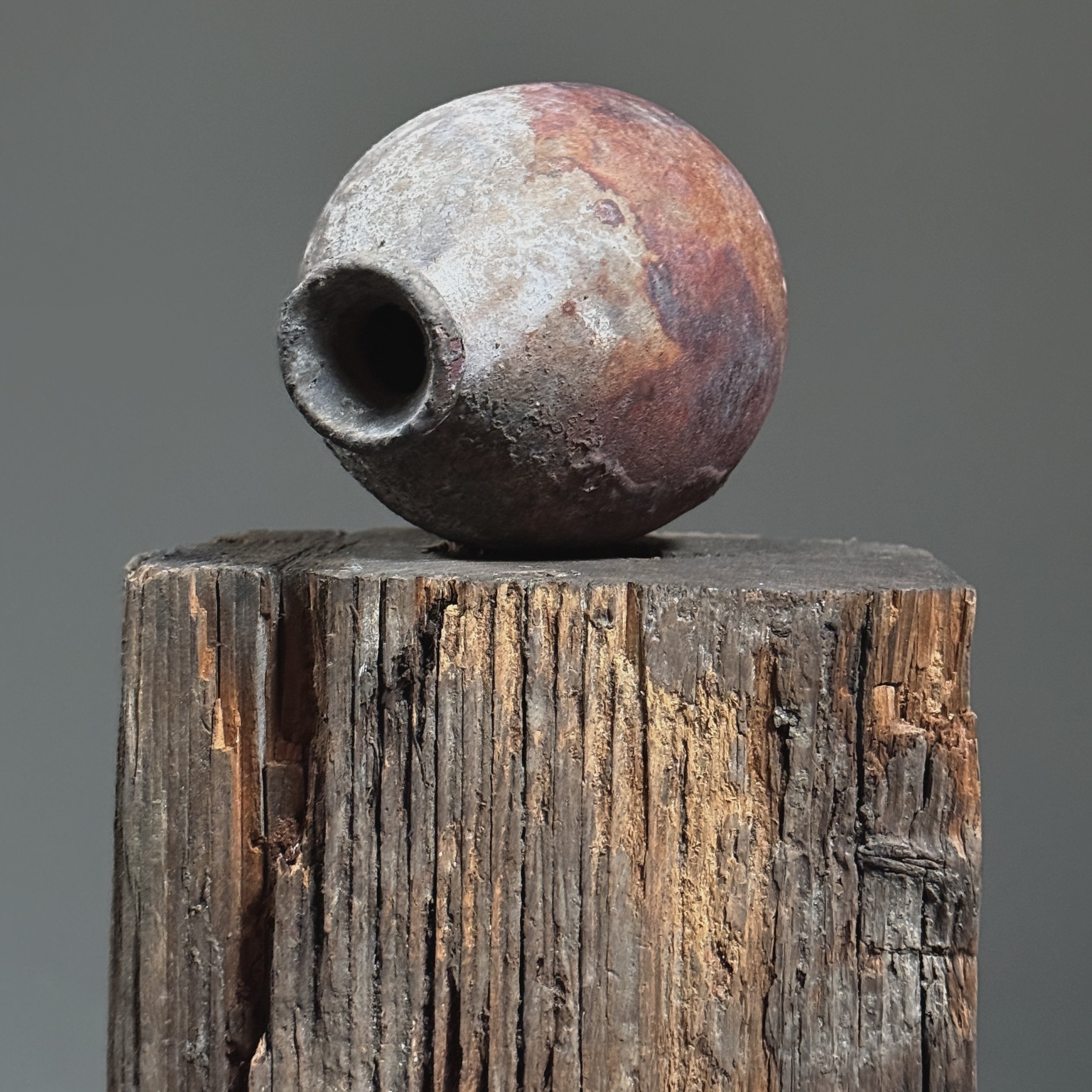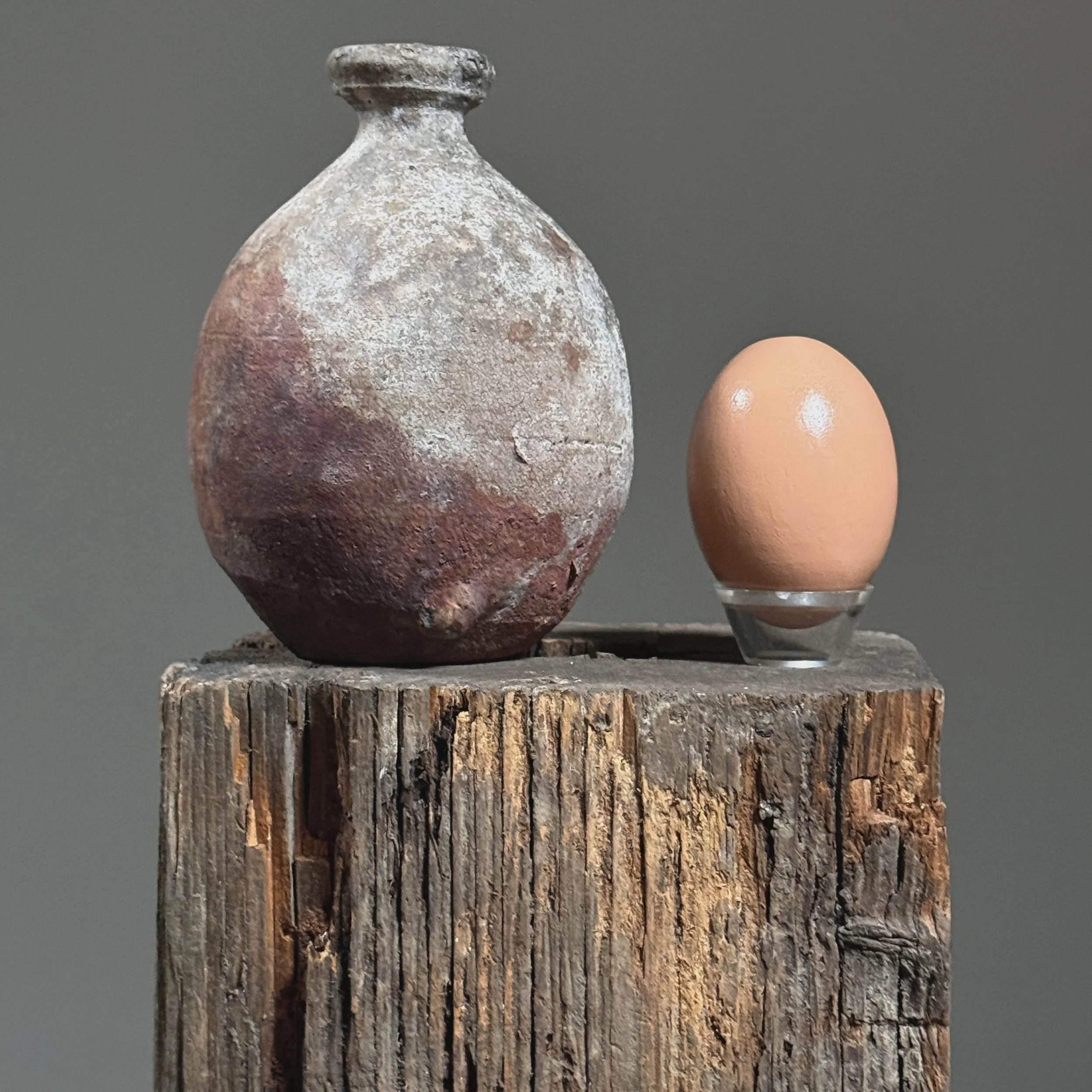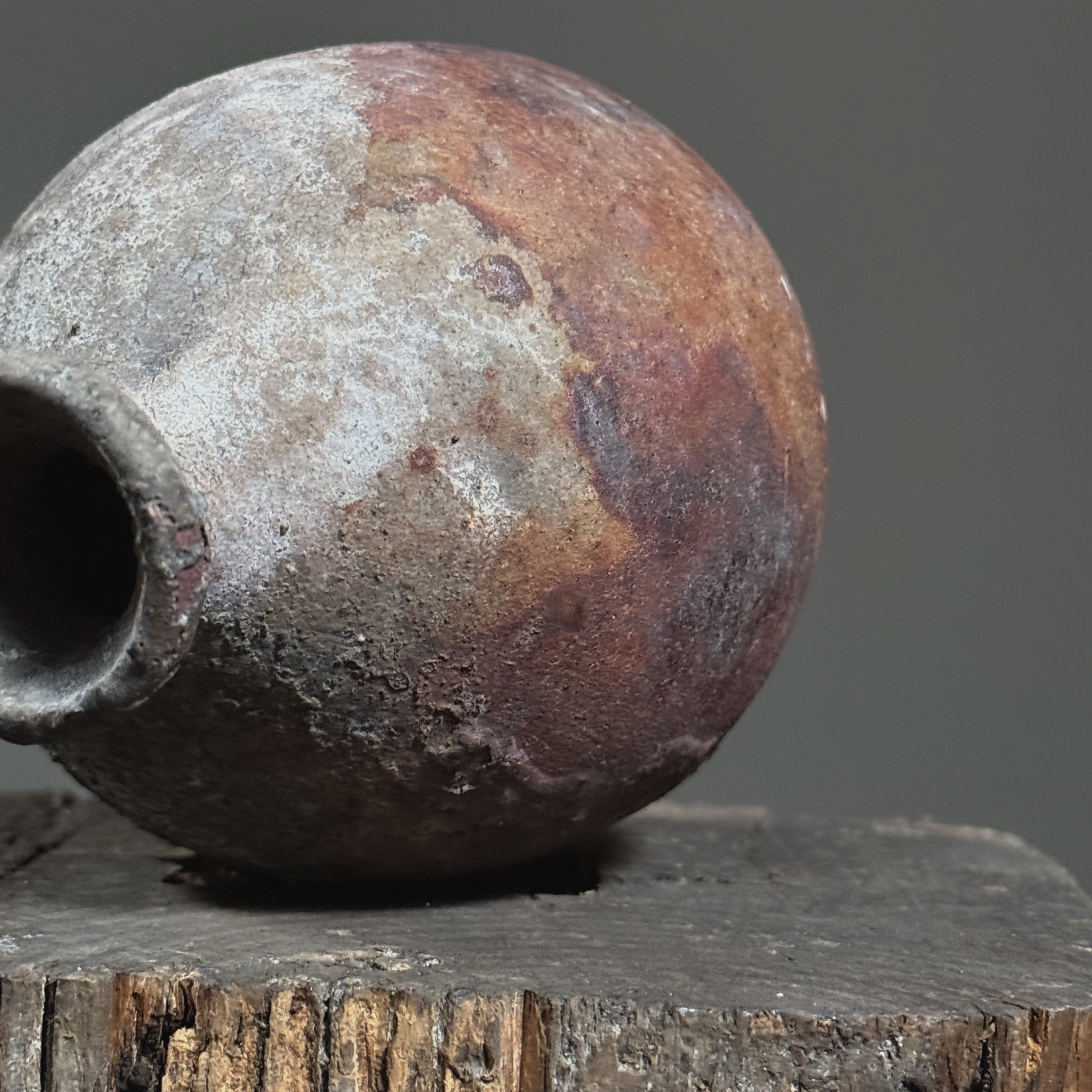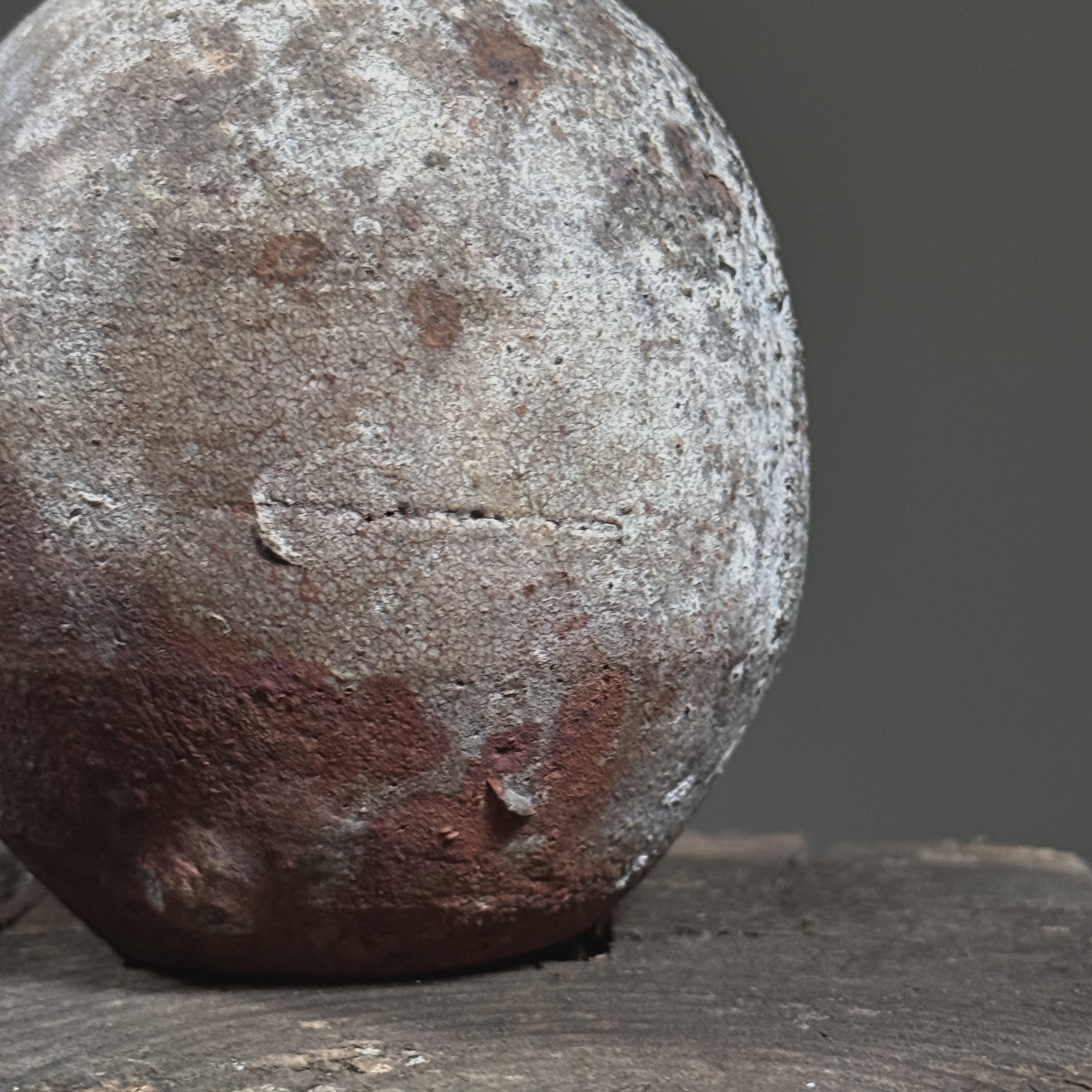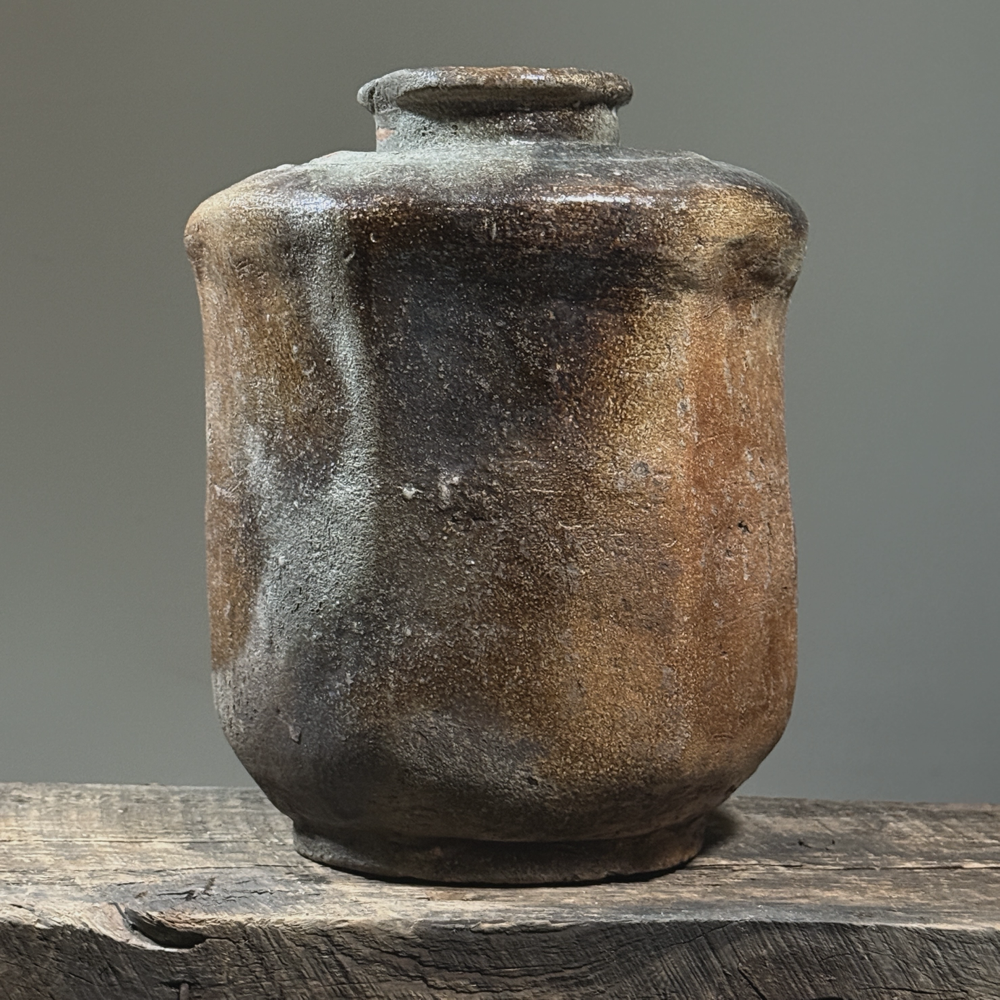 Image 1 of 16
Image 1 of 16

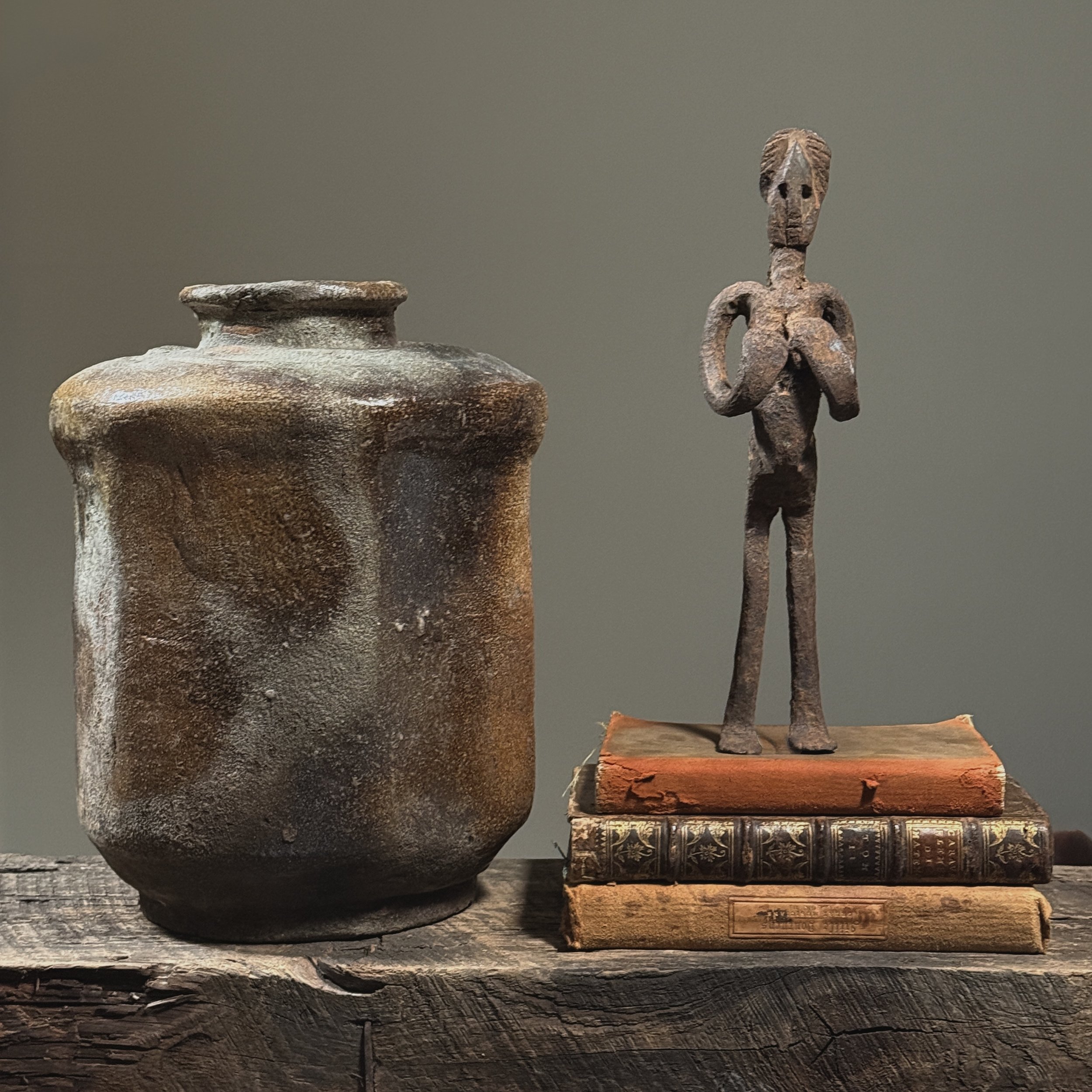 Image 2 of 16
Image 2 of 16

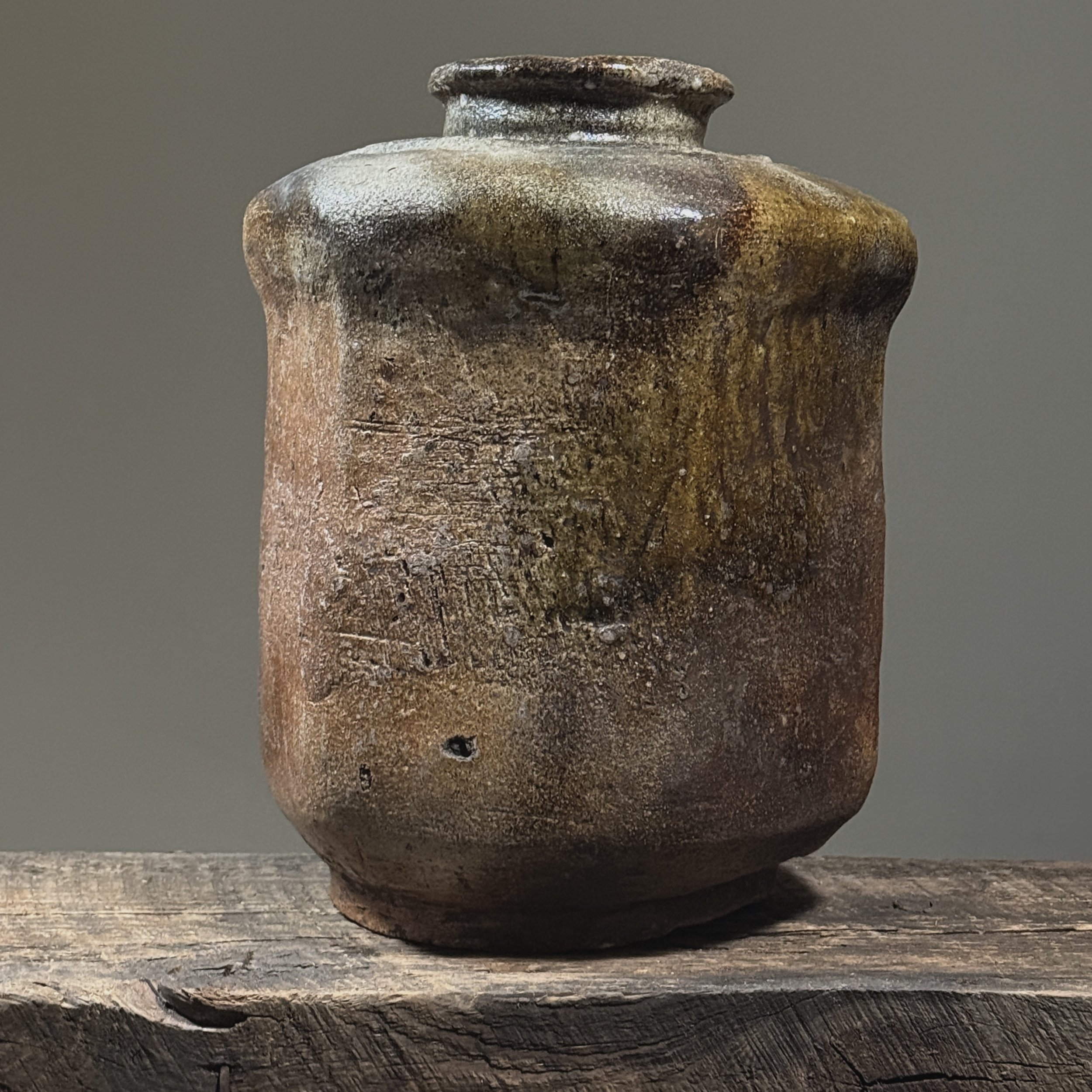 Image 3 of 16
Image 3 of 16

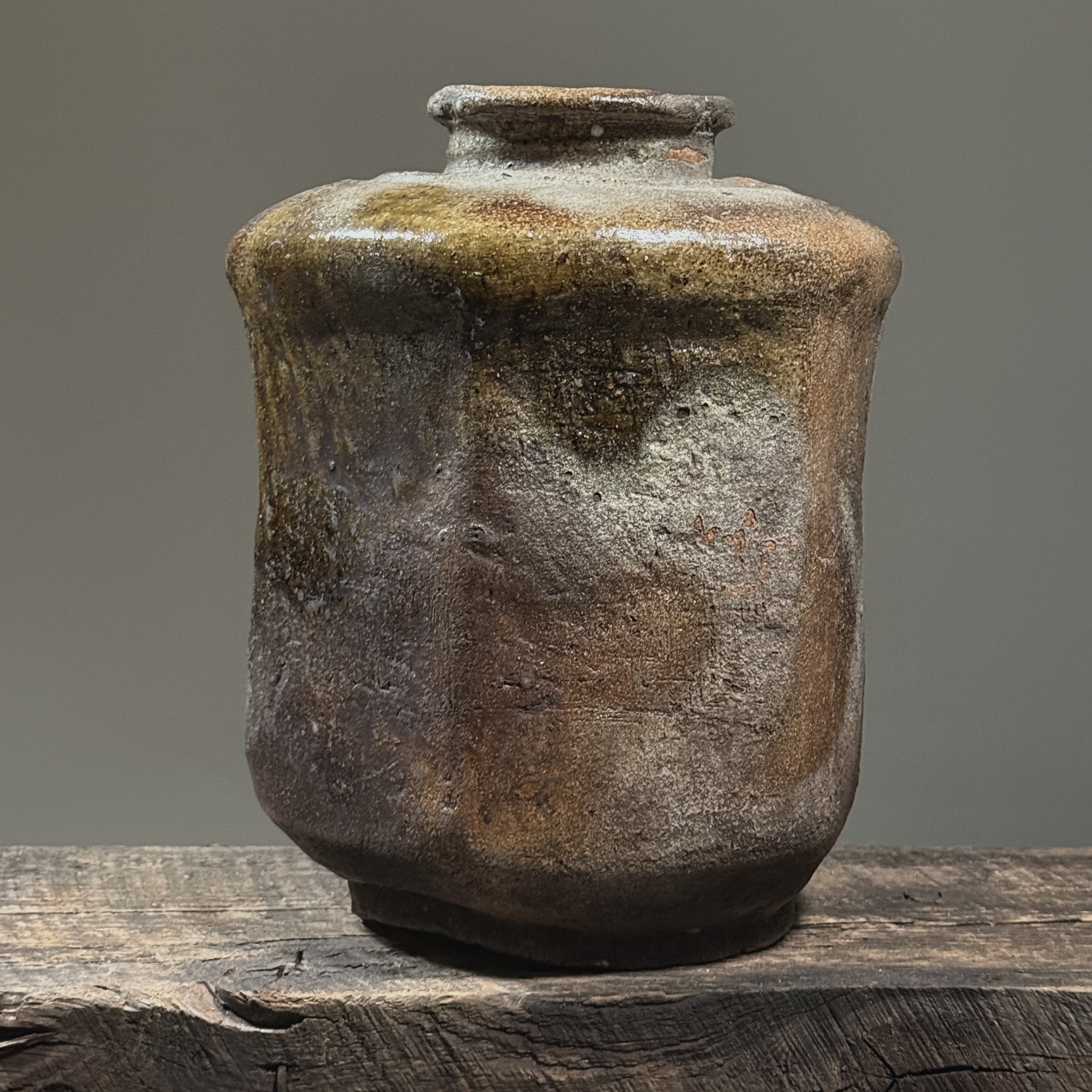 Image 4 of 16
Image 4 of 16

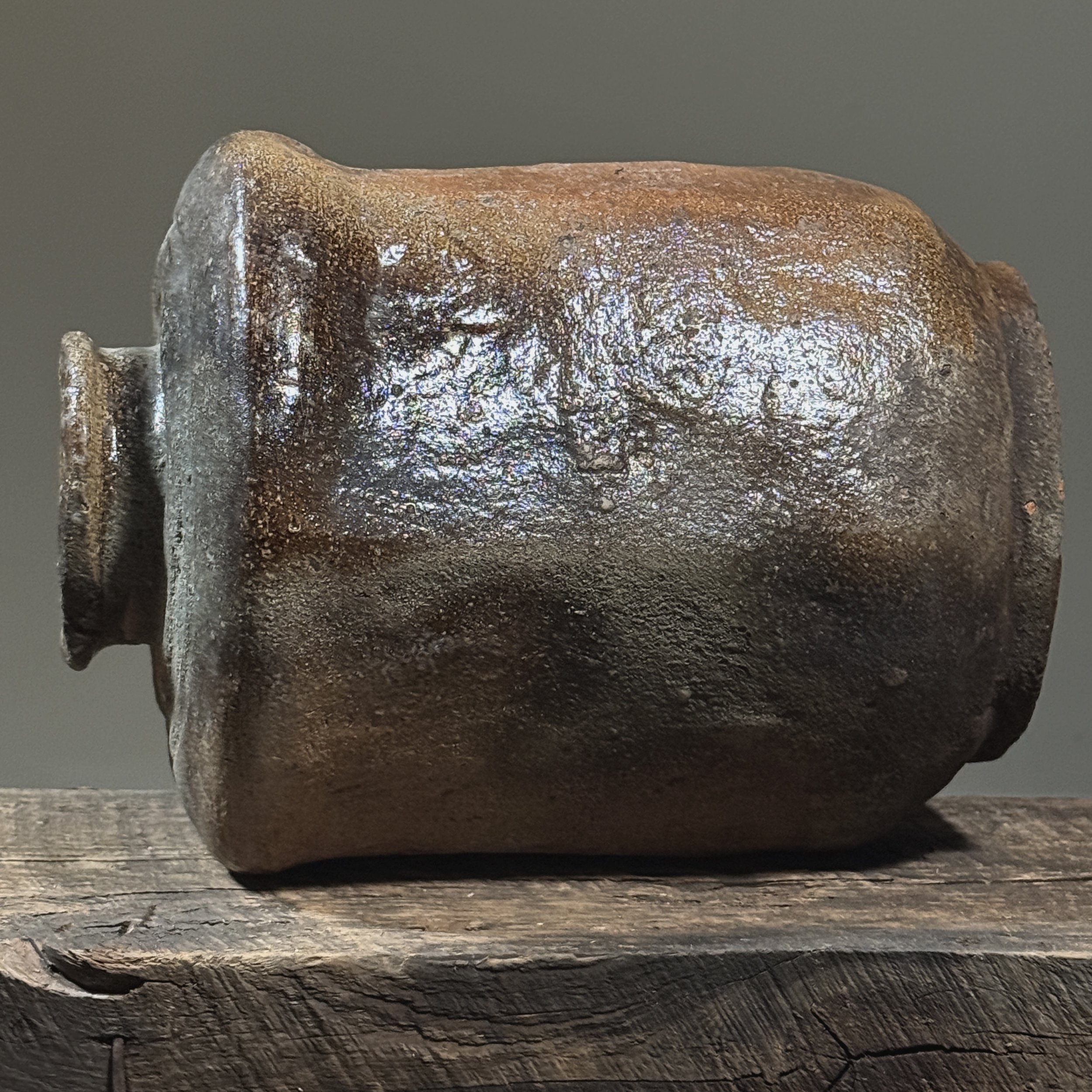 Image 5 of 16
Image 5 of 16

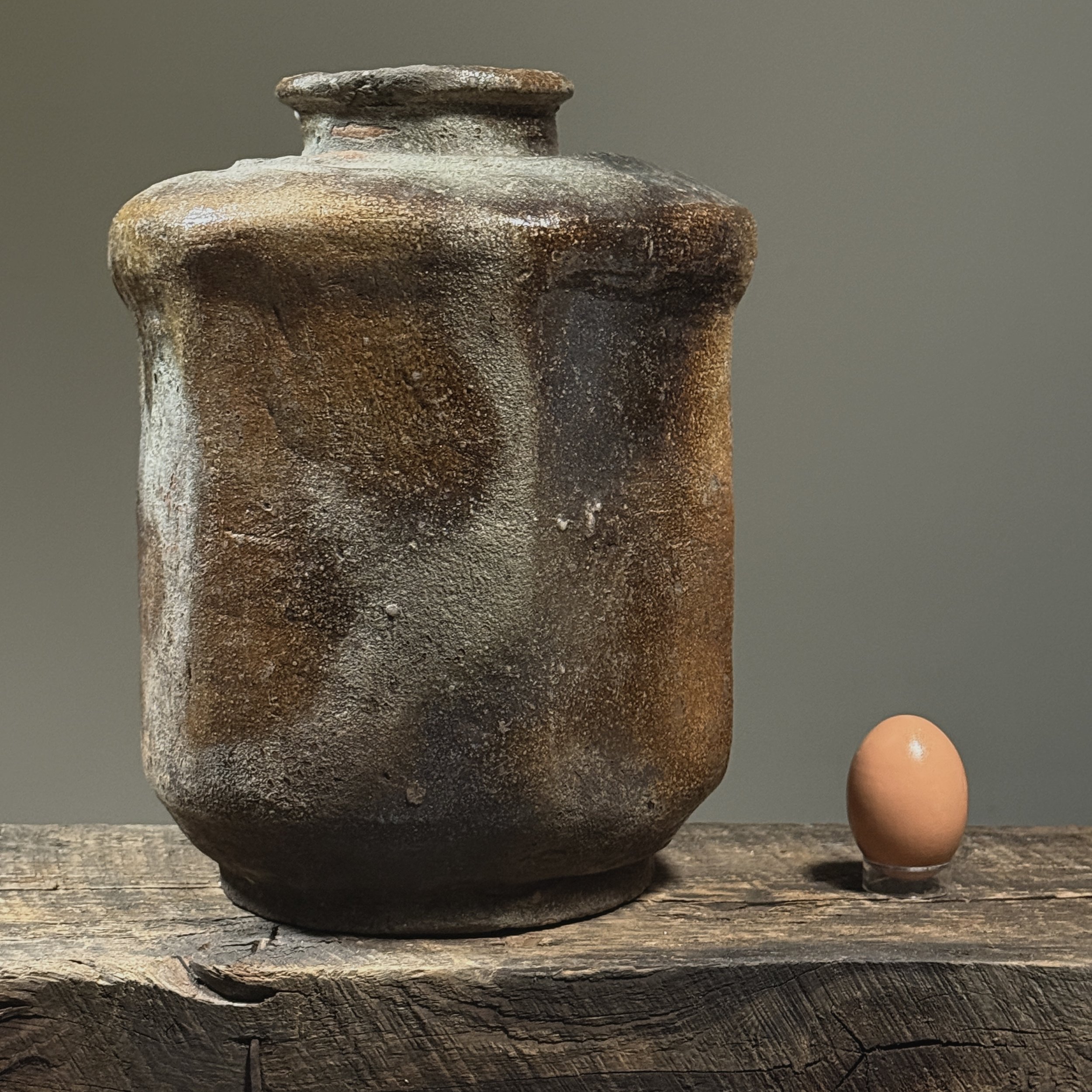 Image 6 of 16
Image 6 of 16

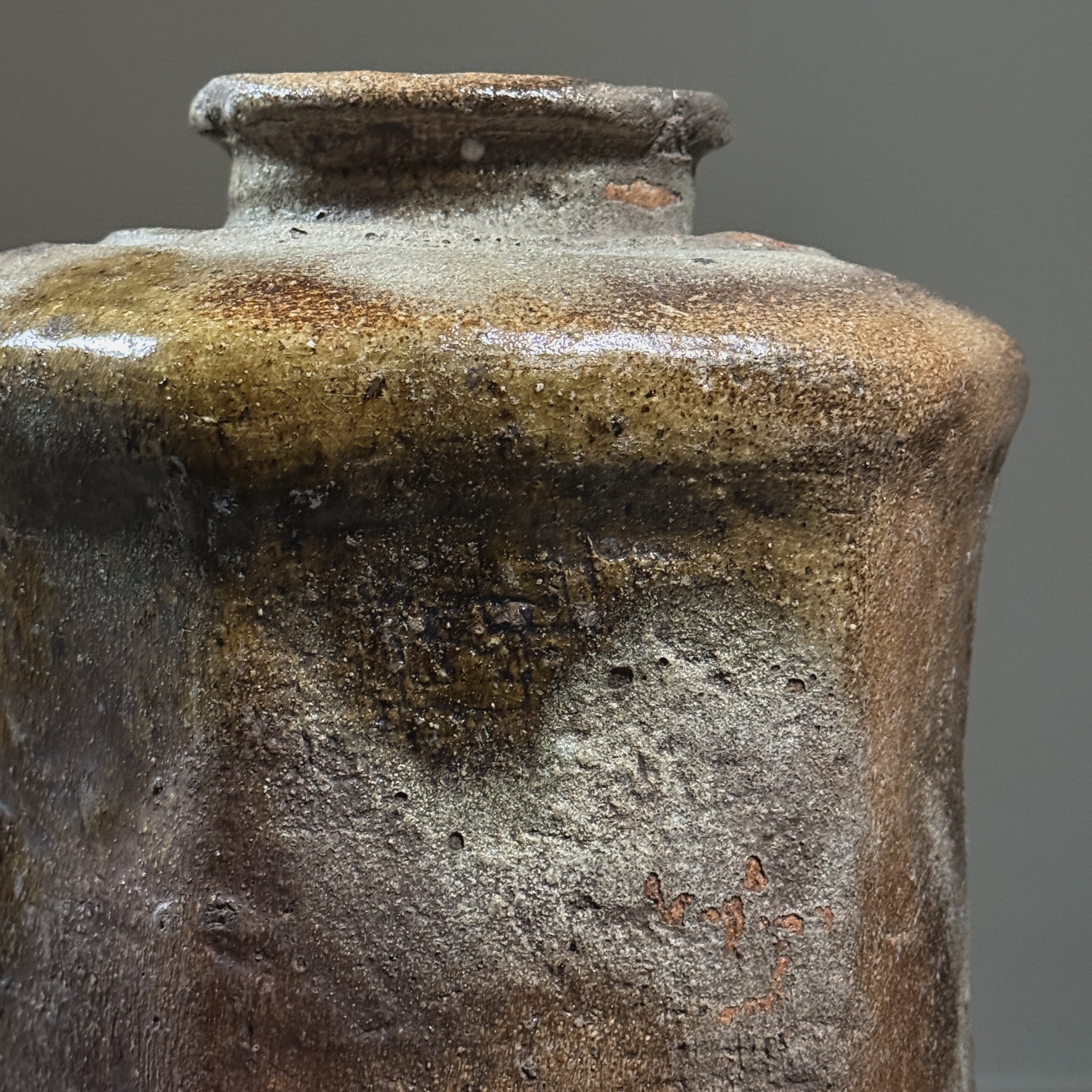 Image 7 of 16
Image 7 of 16

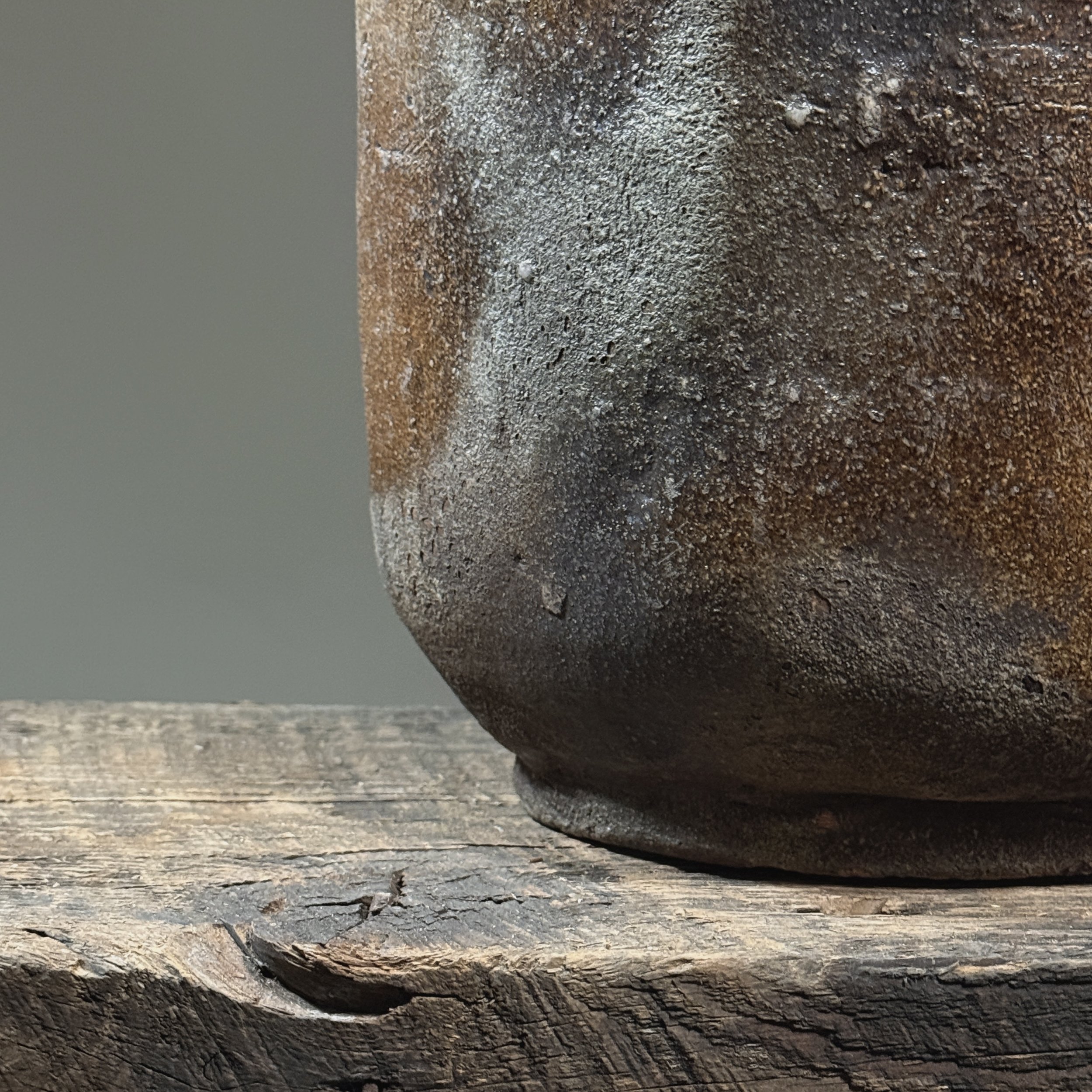 Image 8 of 16
Image 8 of 16

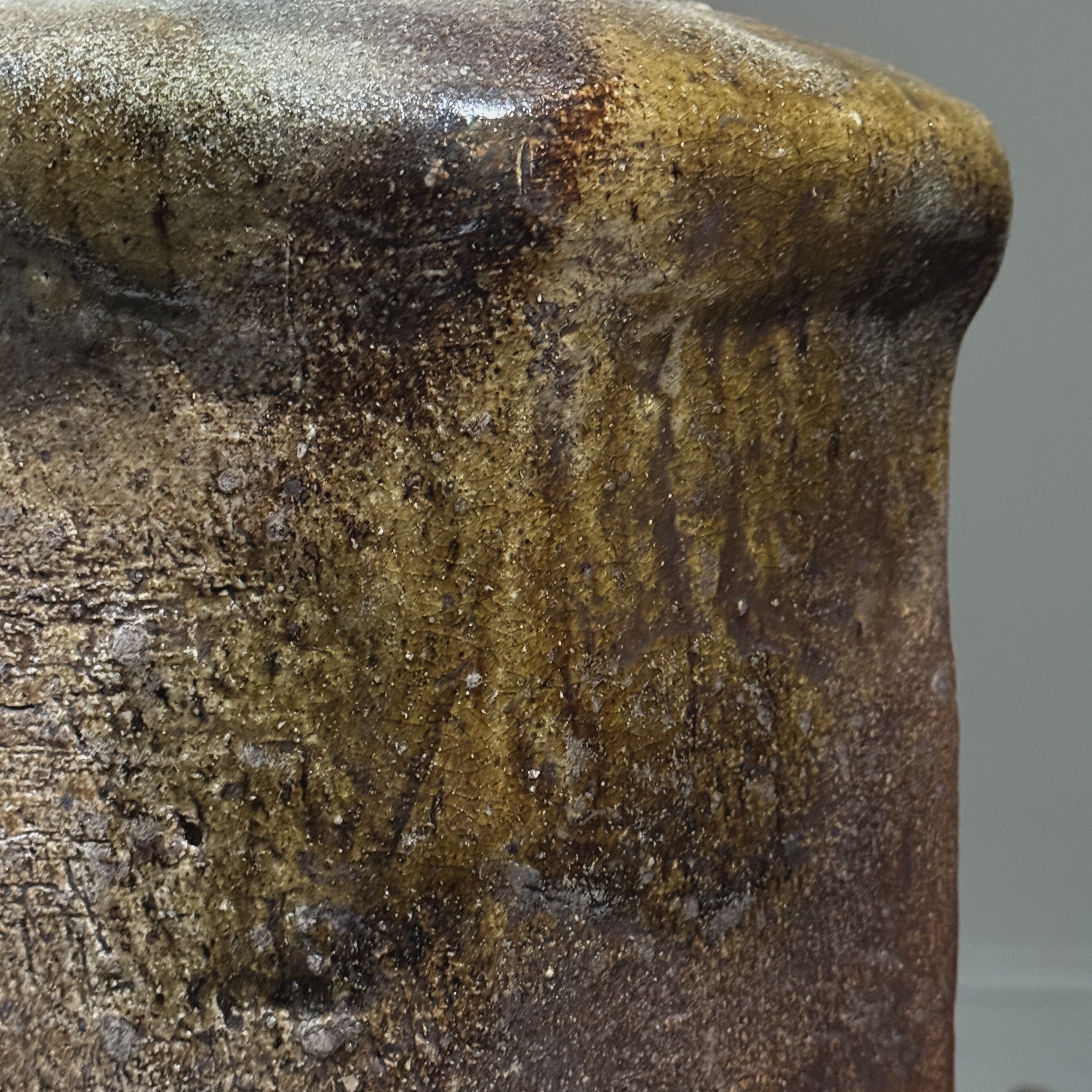 Image 9 of 16
Image 9 of 16

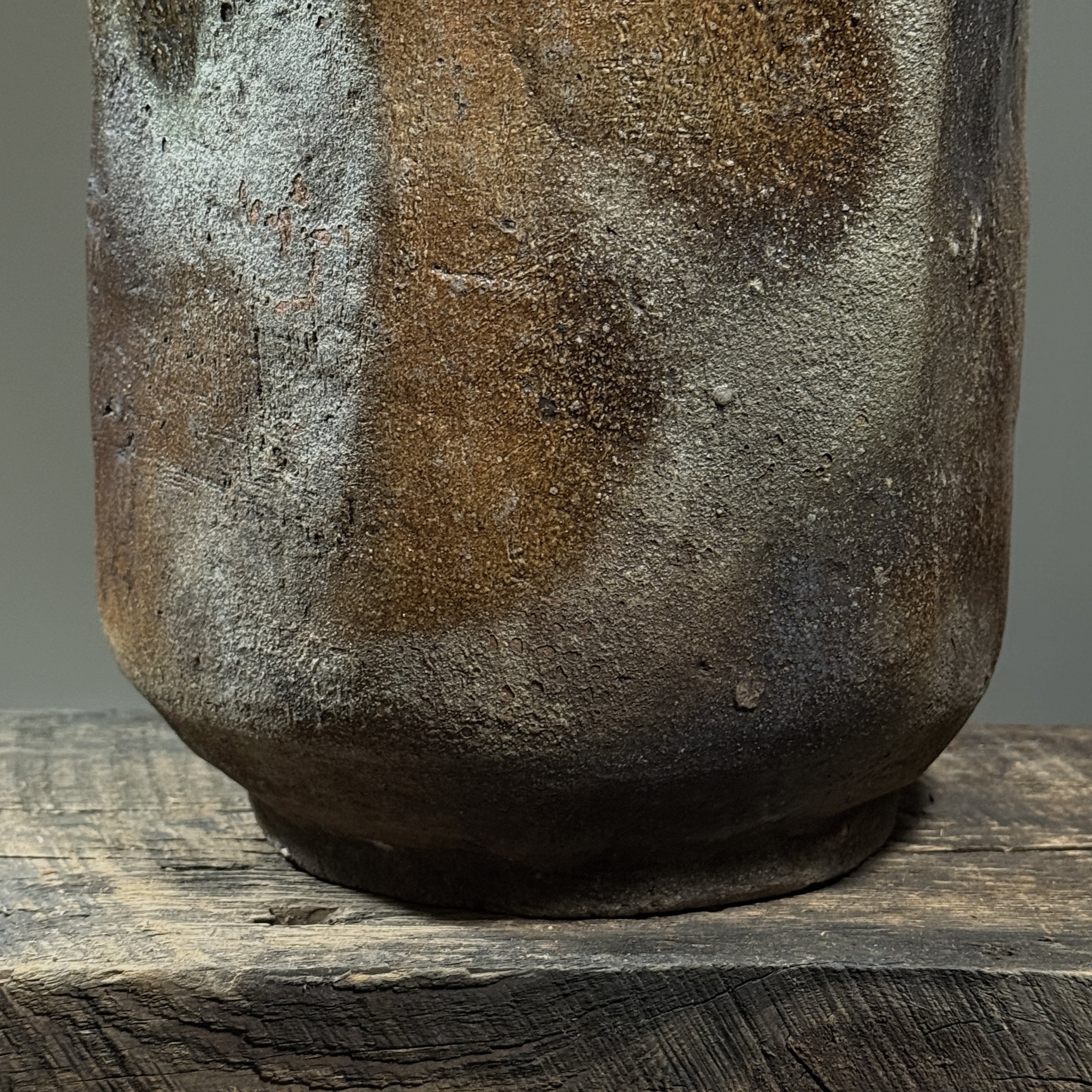 Image 10 of 16
Image 10 of 16

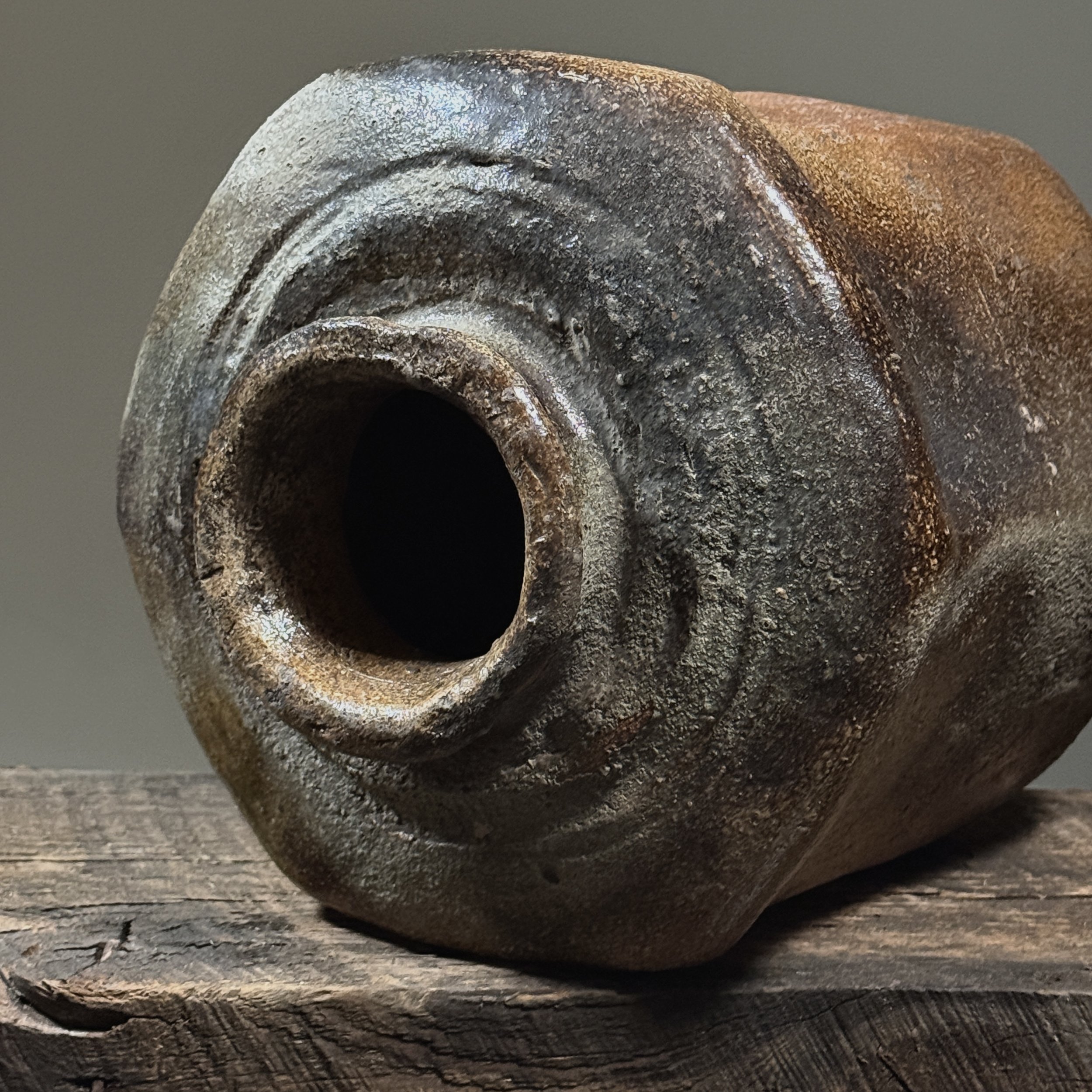 Image 11 of 16
Image 11 of 16

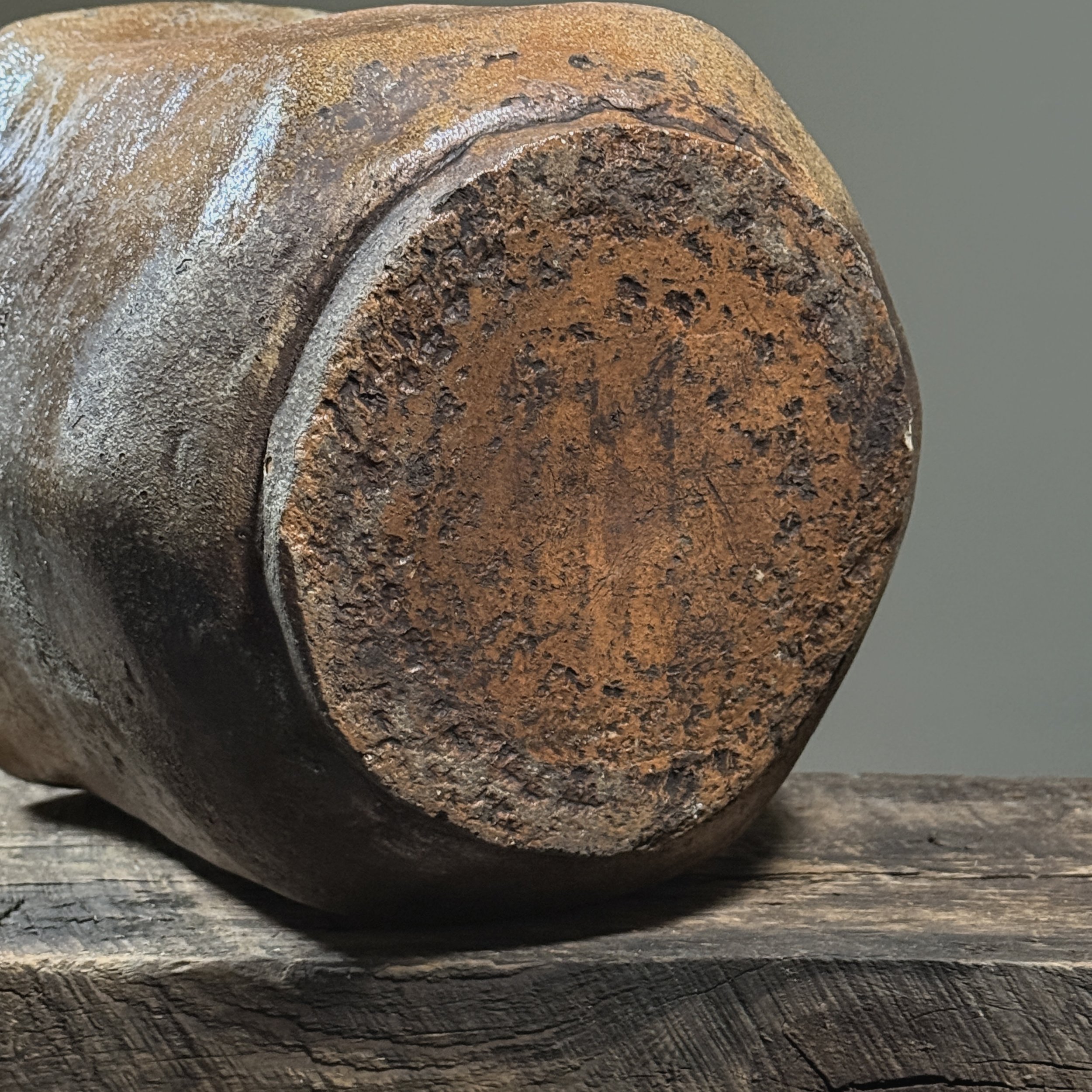 Image 12 of 16
Image 12 of 16

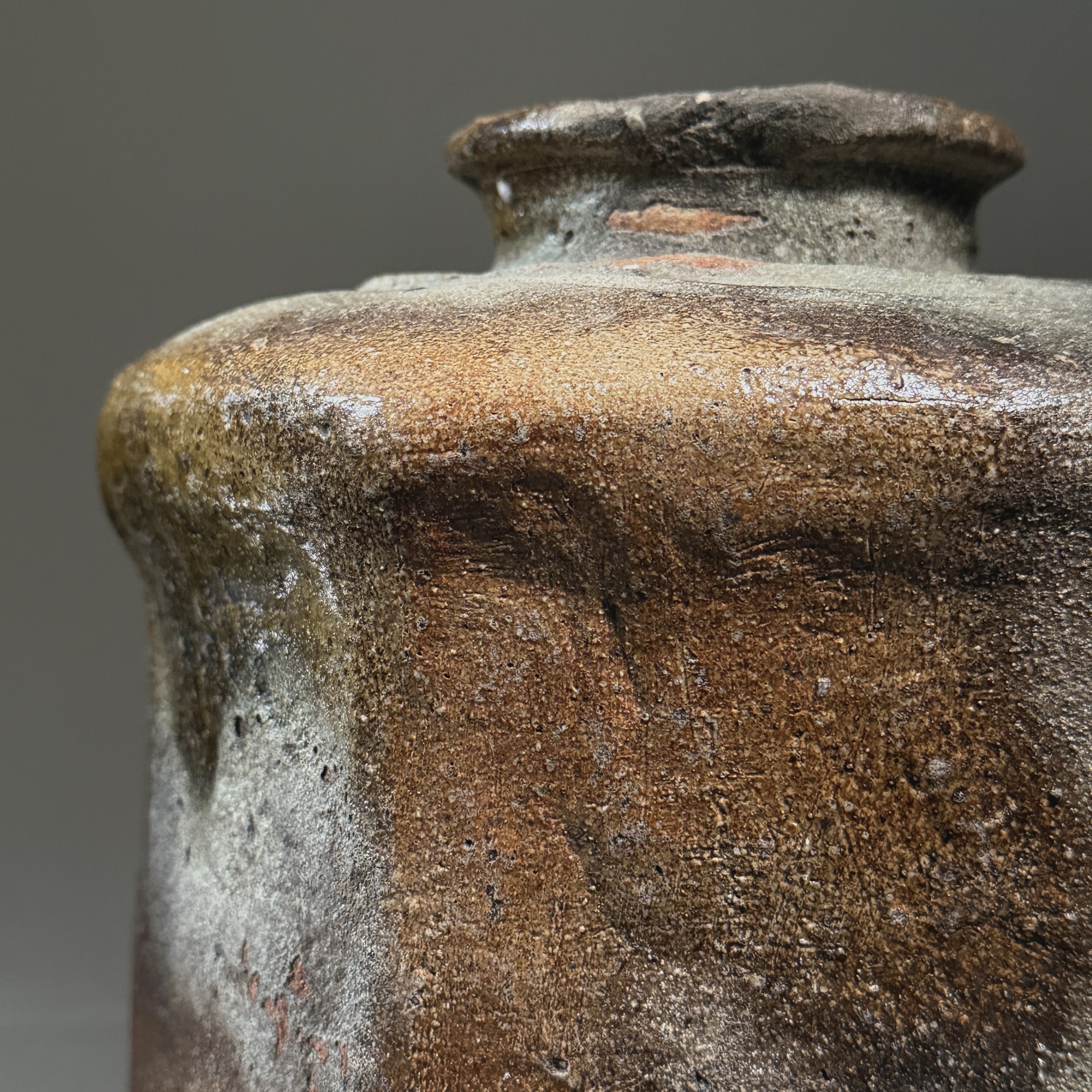 Image 13 of 16
Image 13 of 16

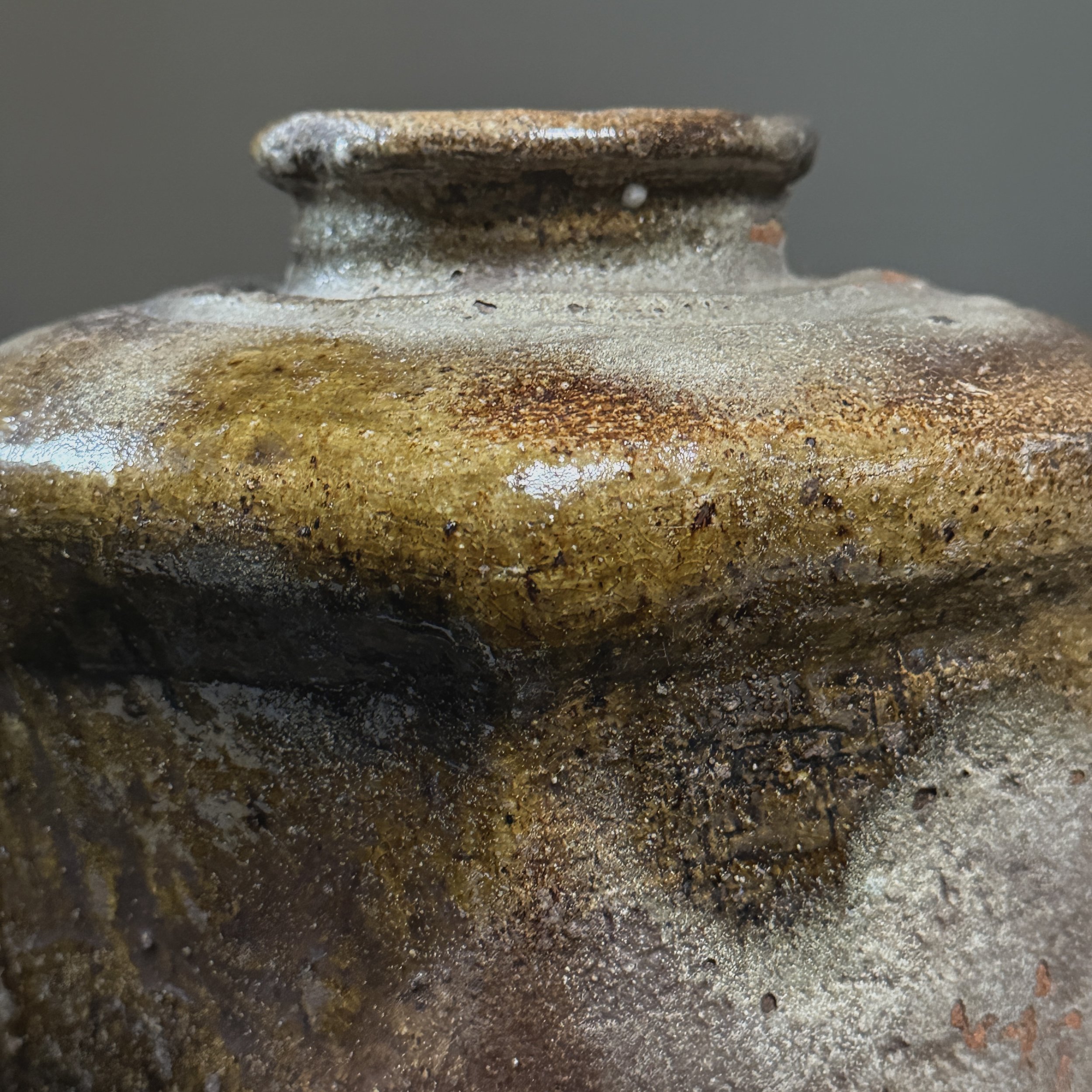 Image 14 of 16
Image 14 of 16

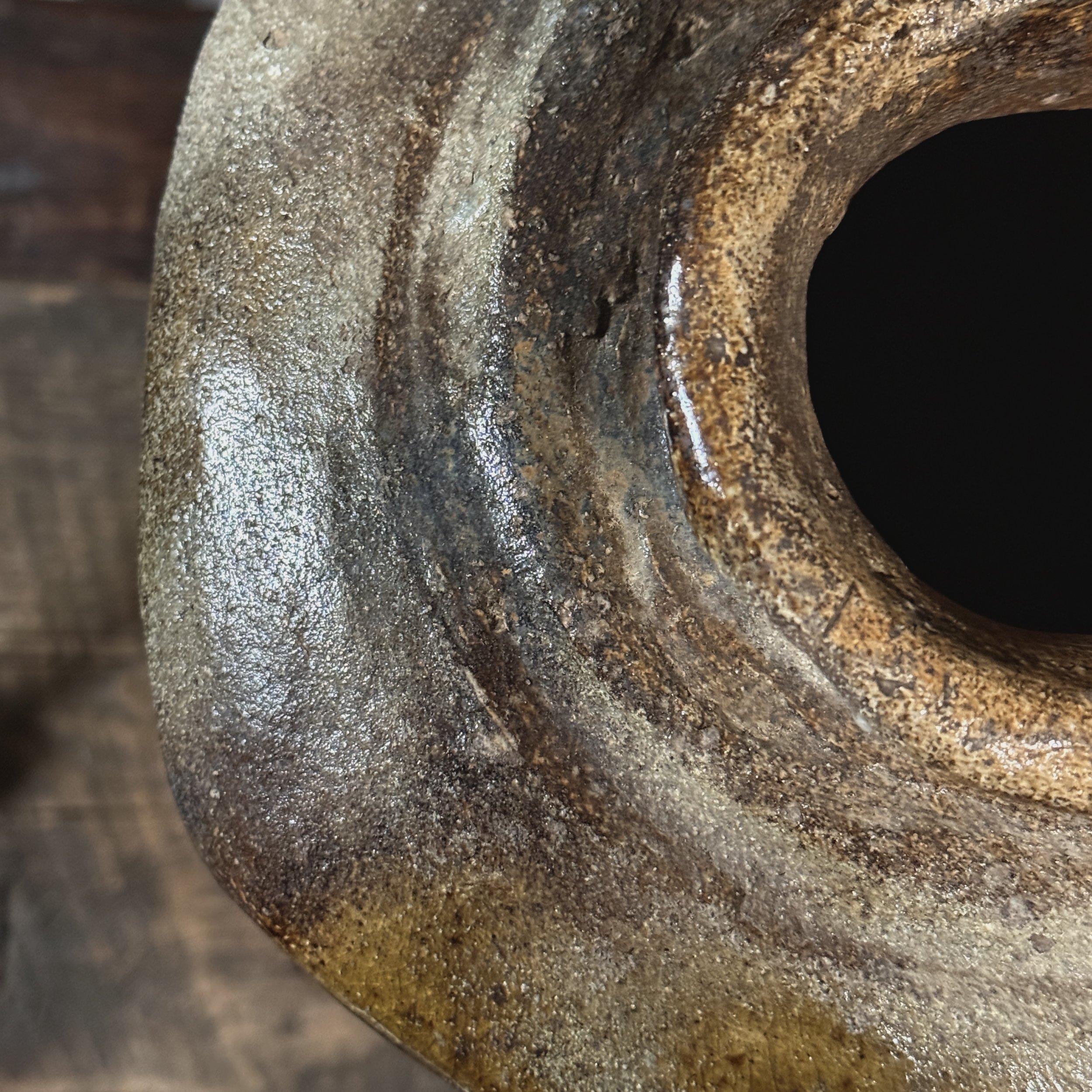 Image 15 of 16
Image 15 of 16

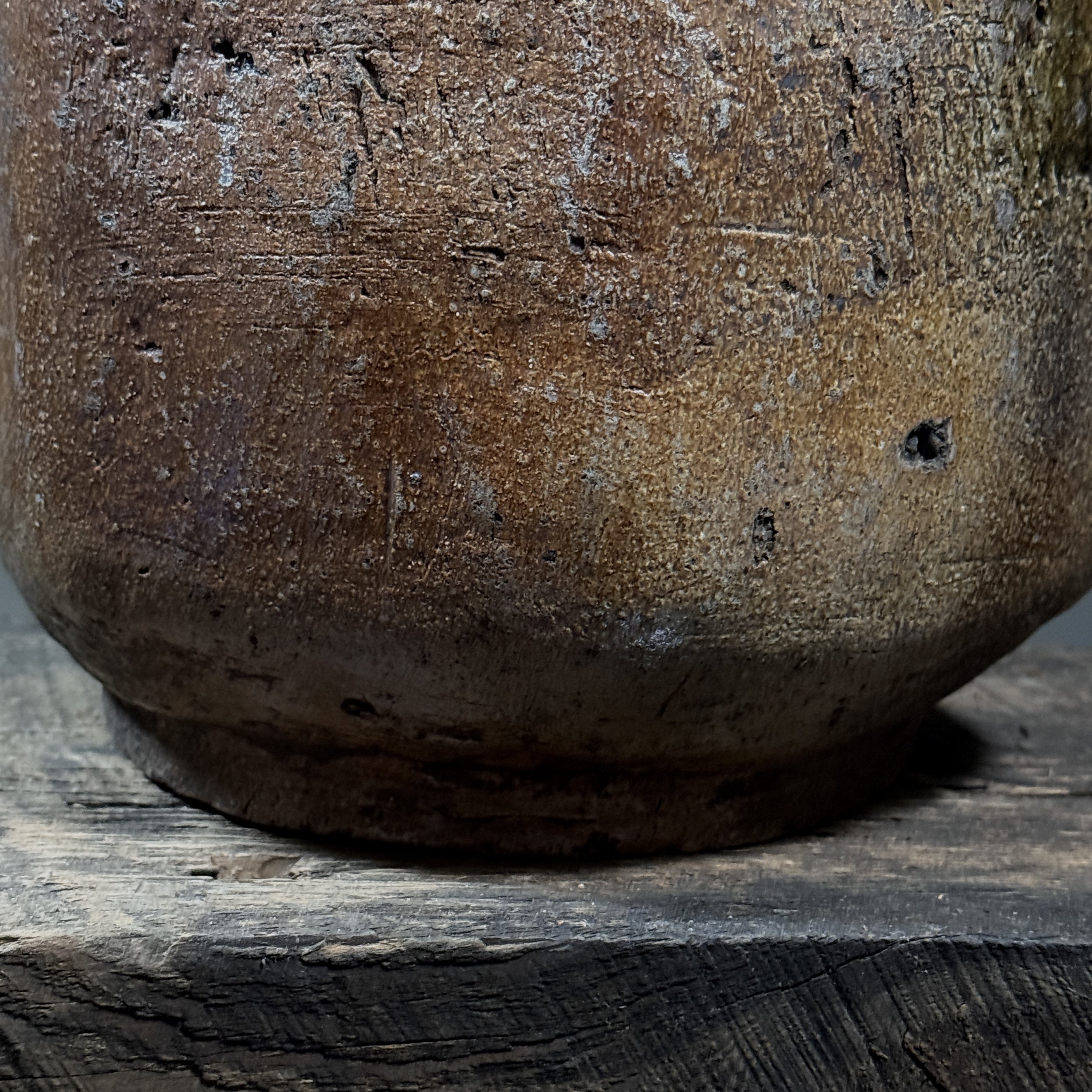 Image 16 of 16
Image 16 of 16

















Antique Large Japanese Edo Period Wood Fired Earthenware Jar (circa 1700-1800)
Antique Japanese Edo Period Wood-Fired Earthenware Jar (c. 1700–1800)
Earthenware • Wood-Fired • Natural Ash Glaze
Description:
A substantial Edo-period wood-fired storage jar, crafted from robust earthenware and bearing the distinctive marks of traditional anagama or noborigama kiln firing. The vessel's organic form showcases subtle ash glaze deposits—natural variations from wood embers—creating a rich, earthy surface with deep iron tones and smoky textures. Its unrefined, utilitarian beauty reflects the wabi-sabi aesthetic of premodern Japanese pottery.
Condition:
In fair antique condition, with expected surface wear, including minor roughness and firing imperfections inherent to early wood-fired ceramics. No restorations or significant damage. Detailed photos provided for reference.
Provenance & Historical Context:
Produced during Japan's Edo period (1603–1868), such jars were typically used for sake fermentation, grain storage, or pickling. This piece exemplifies the rugged yet purposeful craftsmanship of regional kama (kiln) traditions, possibly from Bizen, Shigaraki, or Tamba—known for unglazed, high-fire wares.
Dimensions:
11.5” H × 9” D
Curatorial Notes:
A rare survivor of early Japanese folk pottery, this jar embodies the quiet power of Mingei (folk art) principles—functionality meeting accidental beauty. Its ash-glazed patches and irregular silhouette resonate with collectors of Jōmon, Bizen, and historic utilitarian ceramics.
Antique Japanese Edo Period Wood-Fired Earthenware Jar (c. 1700–1800)
Earthenware • Wood-Fired • Natural Ash Glaze
Description:
A substantial Edo-period wood-fired storage jar, crafted from robust earthenware and bearing the distinctive marks of traditional anagama or noborigama kiln firing. The vessel's organic form showcases subtle ash glaze deposits—natural variations from wood embers—creating a rich, earthy surface with deep iron tones and smoky textures. Its unrefined, utilitarian beauty reflects the wabi-sabi aesthetic of premodern Japanese pottery.
Condition:
In fair antique condition, with expected surface wear, including minor roughness and firing imperfections inherent to early wood-fired ceramics. No restorations or significant damage. Detailed photos provided for reference.
Provenance & Historical Context:
Produced during Japan's Edo period (1603–1868), such jars were typically used for sake fermentation, grain storage, or pickling. This piece exemplifies the rugged yet purposeful craftsmanship of regional kama (kiln) traditions, possibly from Bizen, Shigaraki, or Tamba—known for unglazed, high-fire wares.
Dimensions:
11.5” H × 9” D
Curatorial Notes:
A rare survivor of early Japanese folk pottery, this jar embodies the quiet power of Mingei (folk art) principles—functionality meeting accidental beauty. Its ash-glazed patches and irregular silhouette resonate with collectors of Jōmon, Bizen, and historic utilitarian ceramics.
Antique Japanese Edo Period Wood-Fired Earthenware Jar (c. 1700–1800)
Earthenware • Wood-Fired • Natural Ash Glaze
Description:
A substantial Edo-period wood-fired storage jar, crafted from robust earthenware and bearing the distinctive marks of traditional anagama or noborigama kiln firing. The vessel's organic form showcases subtle ash glaze deposits—natural variations from wood embers—creating a rich, earthy surface with deep iron tones and smoky textures. Its unrefined, utilitarian beauty reflects the wabi-sabi aesthetic of premodern Japanese pottery.
Condition:
In fair antique condition, with expected surface wear, including minor roughness and firing imperfections inherent to early wood-fired ceramics. No restorations or significant damage. Detailed photos provided for reference.
Provenance & Historical Context:
Produced during Japan's Edo period (1603–1868), such jars were typically used for sake fermentation, grain storage, or pickling. This piece exemplifies the rugged yet purposeful craftsmanship of regional kama (kiln) traditions, possibly from Bizen, Shigaraki, or Tamba—known for unglazed, high-fire wares.
Dimensions:
11.5” H × 9” D
Curatorial Notes:
A rare survivor of early Japanese folk pottery, this jar embodies the quiet power of Mingei (folk art) principles—functionality meeting accidental beauty. Its ash-glazed patches and irregular silhouette resonate with collectors of Jōmon, Bizen, and historic utilitarian ceramics.

